As part of my usual outings outside Thailand, the period coincided with the miss's free time. Jitima therefore suggested that we visit together while we were at it. Concerning the choice, as we had made this decision quite impromptu and my budget was limited, we were looking for an affordable destination, and easy to organize for a relatively short trip.
It turns out that she has already visited Taiwan (or rather Taipei) twice for work, and since she likes it, it was only natural that she suggested this island located off the coast of Fujian province in mainland China. It is indeed a good candidate, because even though it is over 300 km long, Taiwan offers the possibility of having a glimpse of its attractions, even in a short time.
Then, it's not excessively far (5 hours by plane from Bangkok), and life there, according to Jitima, remains cheap. Finally, thanks to her prior knowledge of Taipei, our starting point and the area where we spent the most time, she was also able to organize our trip more quickly. The choice was therefore made and we were off for a week of discovery, a first for me in Taiwan.
The ROC
And yes, ROC is the official acronym of the island since the English name for Taiwan is "Republic of China". The Republic of China is considered by some UN countries to be an island country in its own right, while others have reservations about its status, at least officially, so as not to offend the "other China", the PRC (for People's Republic of China), which constantly claims this territory as belonging to it de facto.
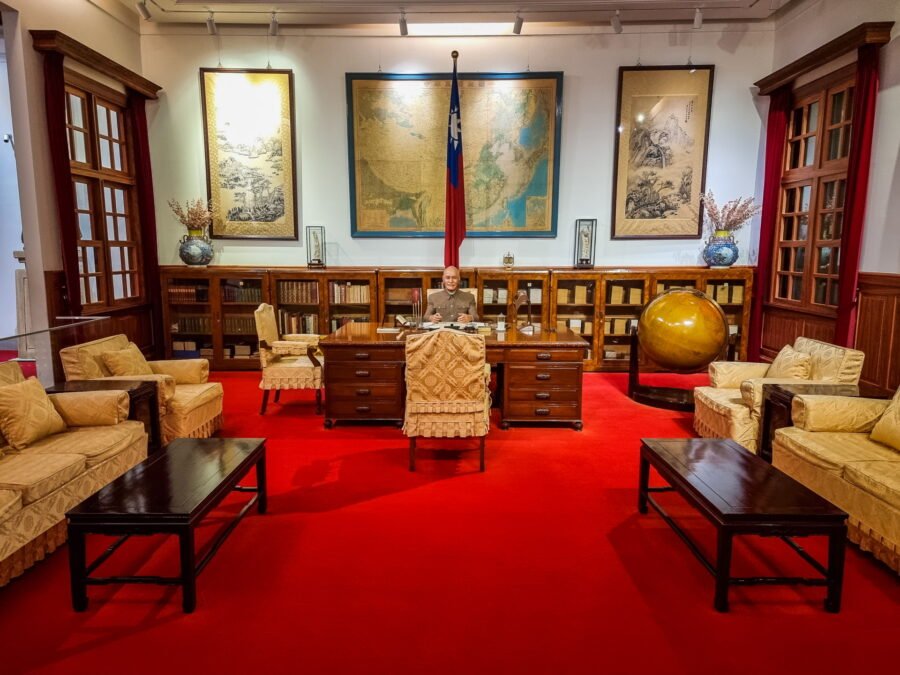
If I had to summarize the history briefly, Taiwan was formerly known as Formosa (derived from Formosa, the marvelous island). This was the term used to refer to the island during the Portuguese and then Dutch colonial period of the 1912th and 1949th centuries. Much later, it became the refuge of the Kuomintang, a political party created in XNUMX, which became an army that opposed the communist regime of Mao Zedong in China until XNUMX.
Under the authoritarian regime of Chiang Kai-shek (also spelled Tchang Kai-shek), Taiwan was paradoxically governed with an iron fist and experienced a real dictatorship. However, after his death in 1975 and especially in the late 1980s, political reforms were put in place (especially by his son, who came to power upon his death), paving the way for democracy.
These reforms led to a freedom of speech and a gradual evolution of the regime towards a democratic political system. Today, Taiwan is recognized as a thriving democracy with a vibrant economy and an open society.
Welcome to Taiwan
To begin this section, I have an anecdote that started as soon as we arrived at the airport. Imagine my surprise to see a group of four people dressed in the famous "dinosaur" outfits, waiting with a sign for a friend returning home. It certainly set the tone, and I thought to myself, "Okay, they seem pretty relaxed around here!"
Overall, I can make the same observation as for the South Korea, namely that it is not easy to judge the welcome over such a short time. What I take away from it is that English is generally well understood, so communication was quite easy. Restaurants often have a menu subtitled in the Latin alphabet, knowing that we essentially stayed in urban or tourist areas at a minimum.
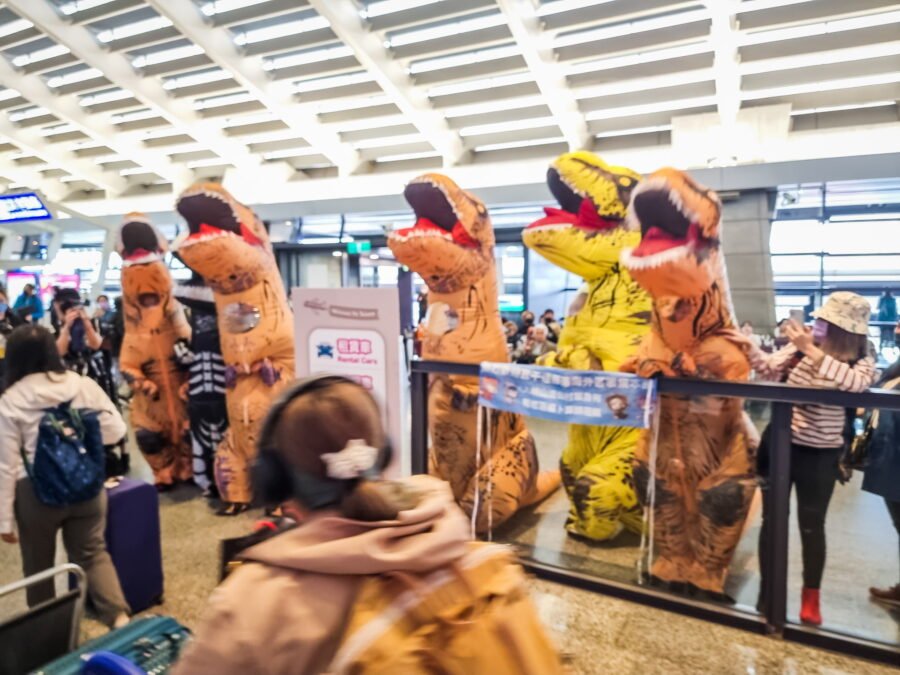
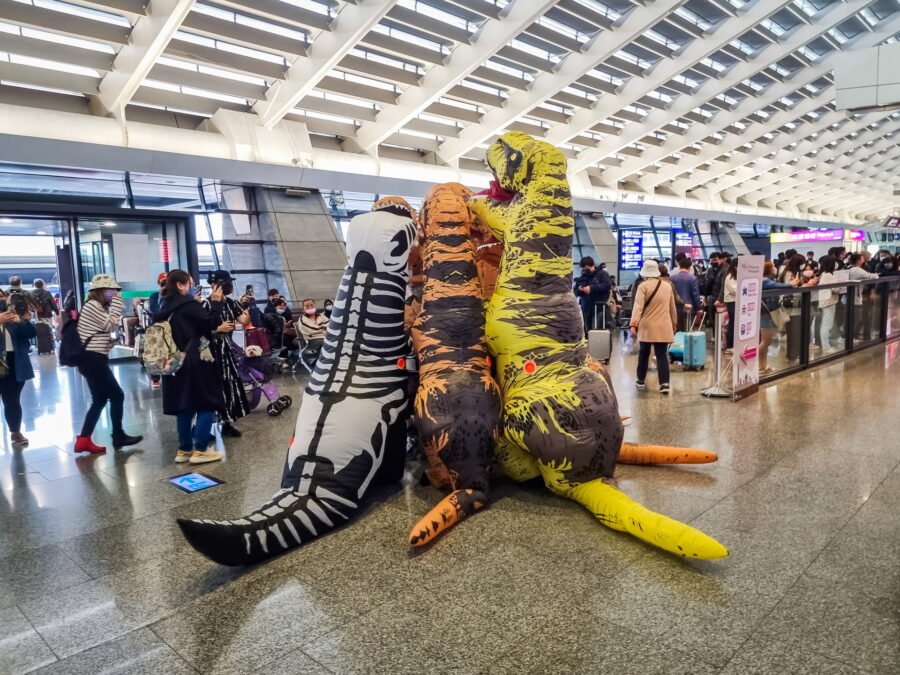
The people are quite welcoming and the atmosphere felt gave the impression of a country that seems to be in tune with itself, a country where freedom predominates, you feel at ease there, with rather relaxed and smiling inhabitants, more so than I expected (and yes, once again, I wrote the same thing when talking about South Korea).
I have two more anecdotes to share to illustrate this paragraph. The first, quite brief and innocuous in itself, is when I was taking a photo of the interior of a café located along the famous Dihua shopping street. Noticing a mural, I take my little photo, without worrying too much about the customers. I take a first photo, ok, I see what it looks like, and go back for a 2nd, that's when two customers look at me, amused, then actually pose.
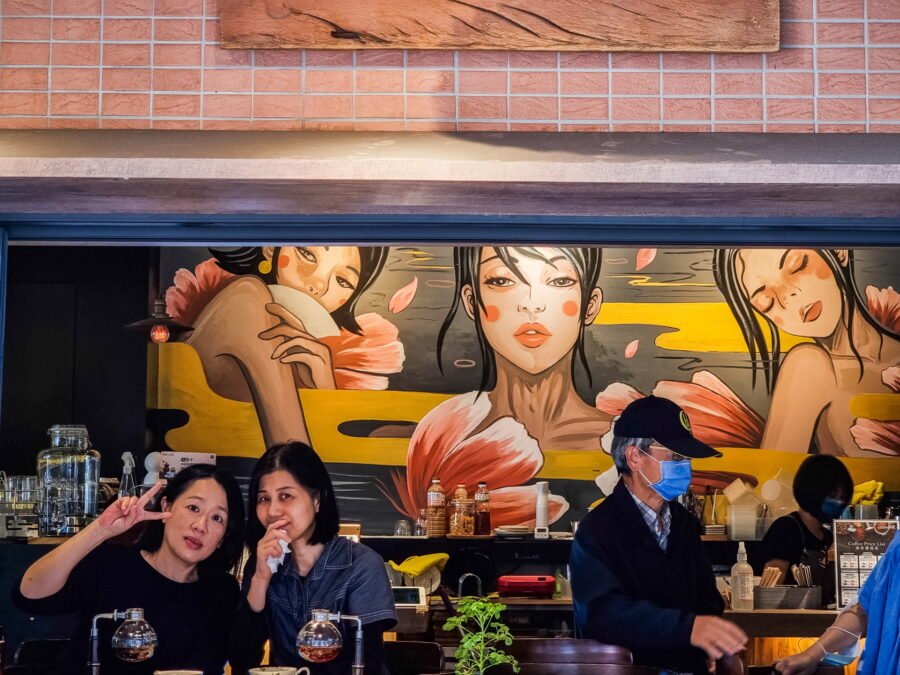
The last anecdote is during our visit to the old liquor production factory (mainly sake, because it was built by the Japanese in 1914), transformed into a creative space in 2007, Huashan 1914 Creative ParkThere are also a few shops where you can buy products related to crafts.
In one of these shops, we were struck by some 3D origami, a kind of paper sculpture where you have to cut out and assemble the pieces by sticking them together. As we were making our choice, an elderly lady came up to us, all smiles. Although she didn't speak English, she tried to advise us, and when we noticed the paper masks, she encouraged us to try them. Full of enthusiasm, she spontaneously offered to take a picture of us with the masks on our heads.
At that moment, we wondered who was having more fun: us with our masks or the saleswoman who took pictures of us while making us take different poses. These experiences demonstrate the warm welcome and possible friendliness of the Taiwanese, who were open, rather friendly and ready to share simple moments with foreigners.
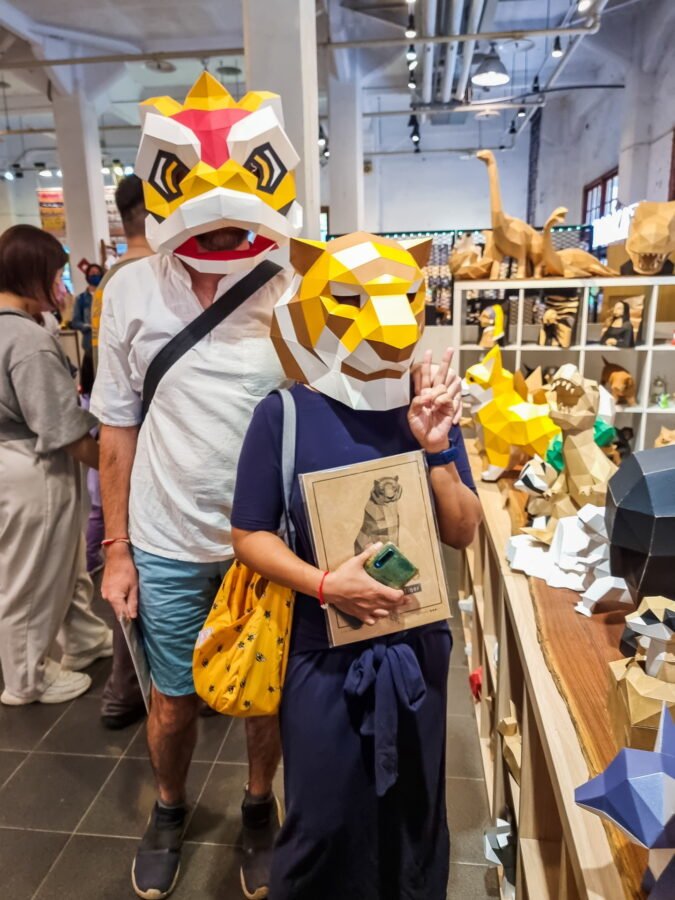
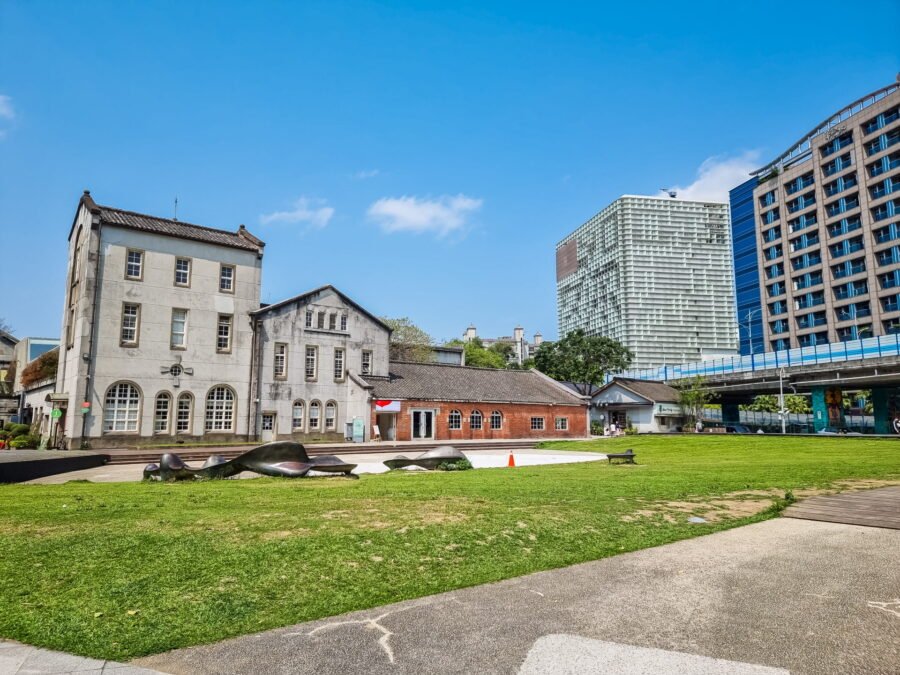
Taiwanese cuisine
Obviously, we are touching on a personal subject, where everything is a question of taste. In this case, for me, I am not a big fan of Chinese cuisine in the broad sense. It is certainly very varied so I am far from having tried everything, but until now, rare are the Chinese dishes that have really excited me and Taiwan has unfortunately not managed to change my mind.
It must be said that the first dish I tried, a kind of broth with udon-type noodles, didn't really have any taste and didn't give me confidence for the rest...
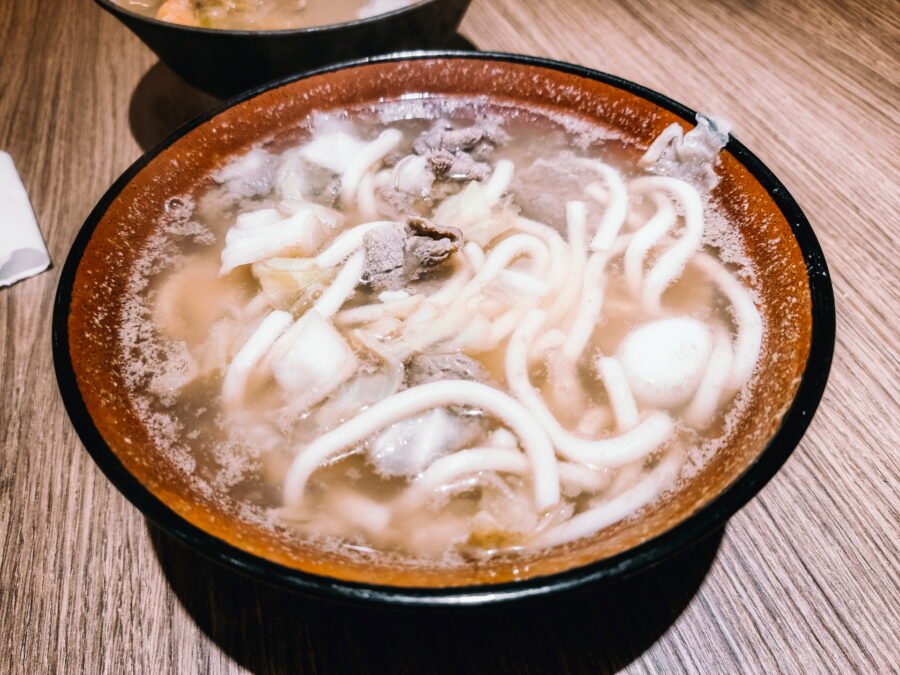
I would be happy with some good street food, though, like this guy making some kind of pancake or salty "roti" (a reference to the kind of Thai crepe), called "Dan Bing", or these little balls of meat or fish on skewers, dipped in a spicy sauce, that suited me just fine.
We also ate several times in the night markets, numerous in Taipei, one of which was simply the street right in front of our hotel, so we gave up on street food.
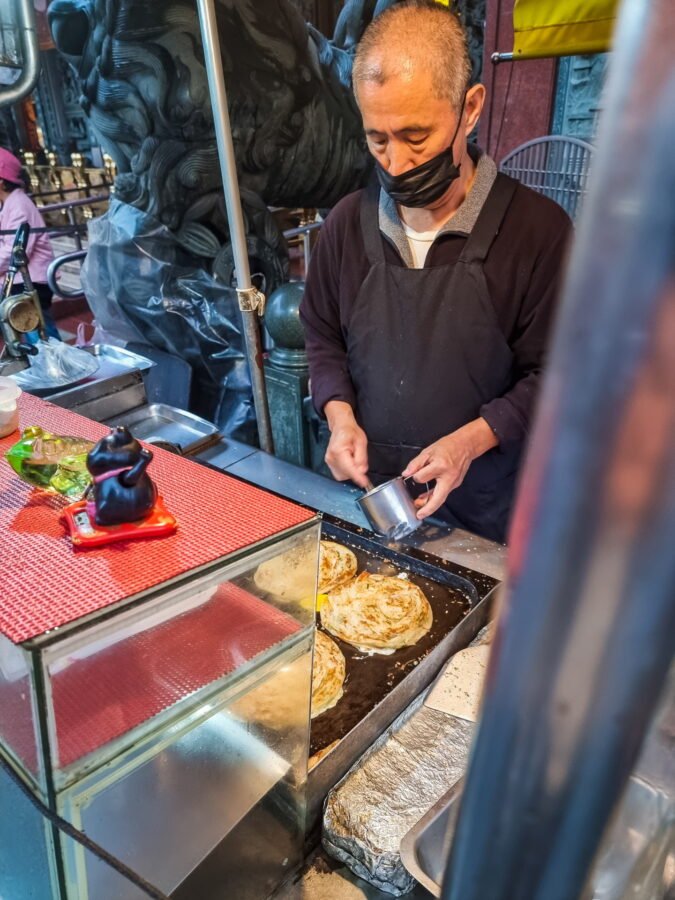
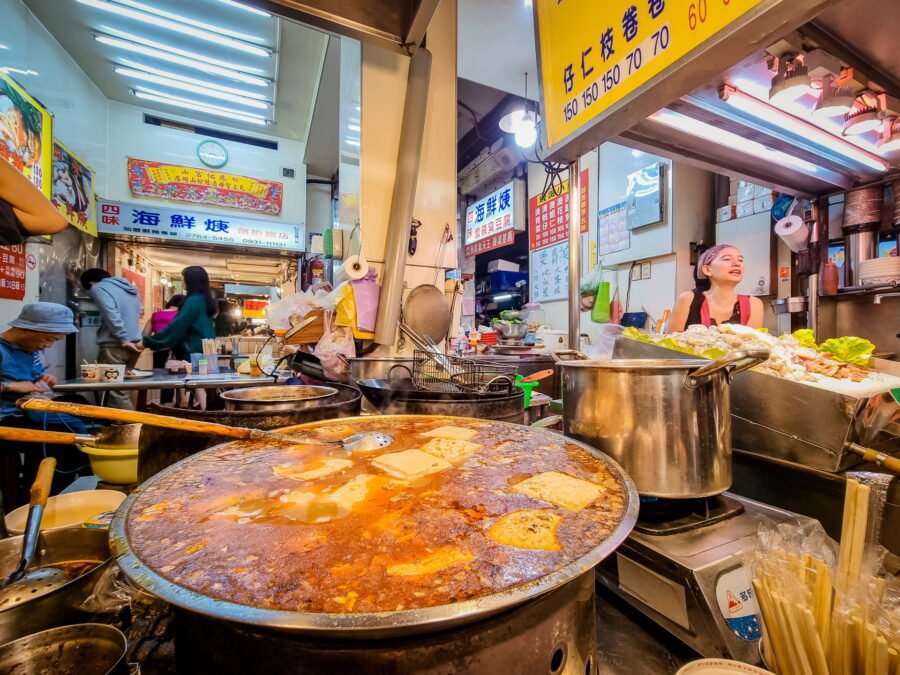
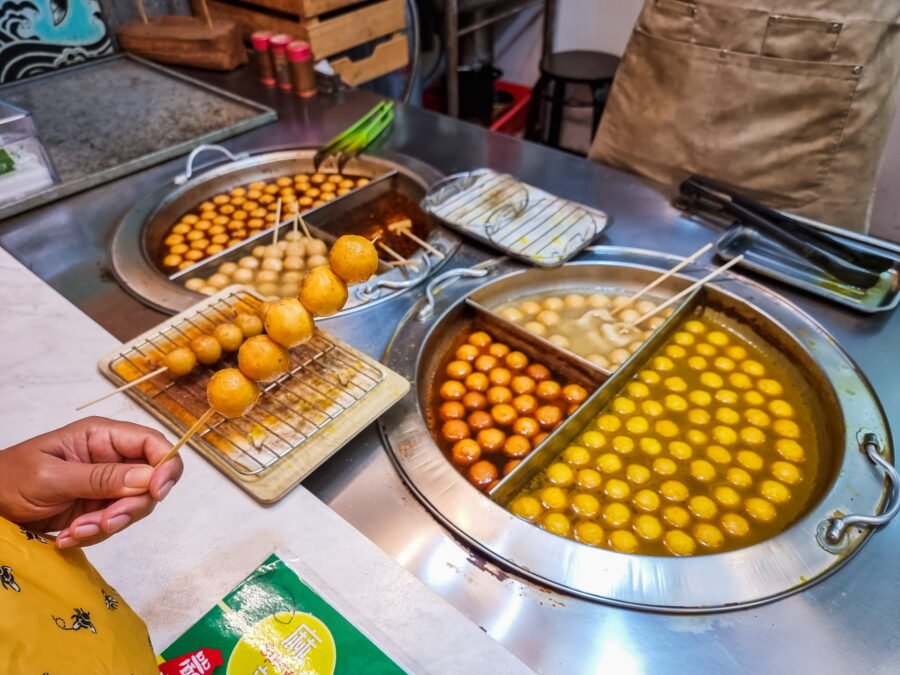
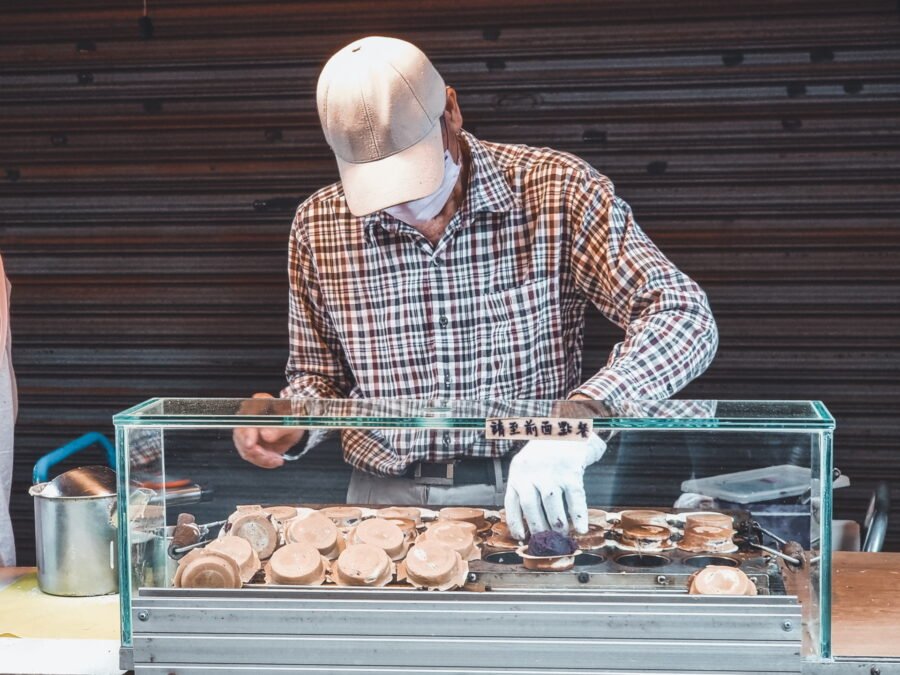
We also tried local restaurants like during our trip along the north coast. While we were in the village of Nanya to do the little trek with the view, we wanted to eat a bite, but there was little choice, especially because the hours to eat were not before 11am...
So, we ended up at a little granny's house who finished preparing and invited us to come. We ate noodles, a dish that often comes back in Taiwan, with some kind of fish fritters, well frankly not bad.
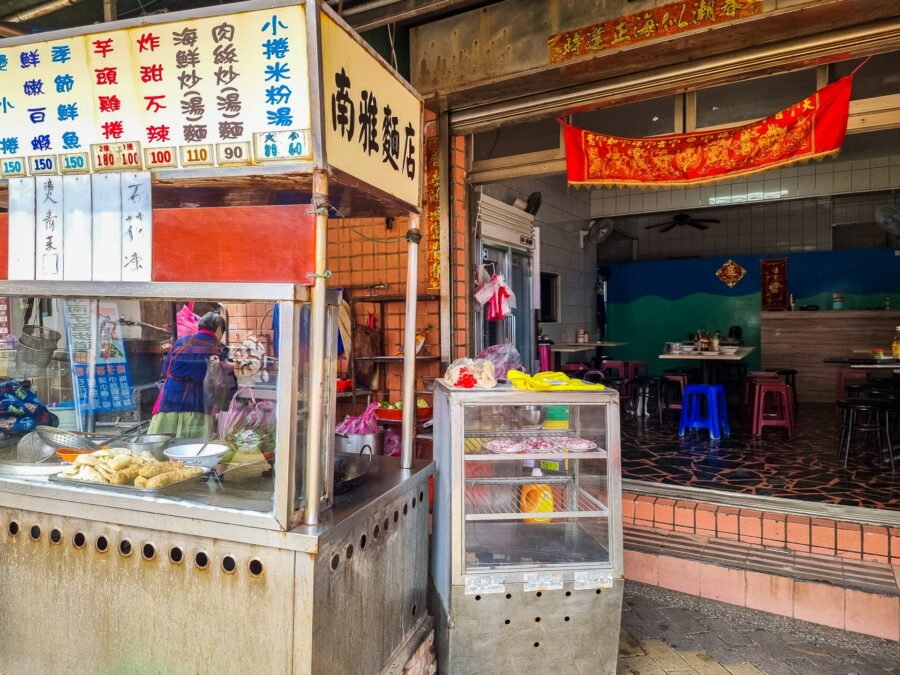
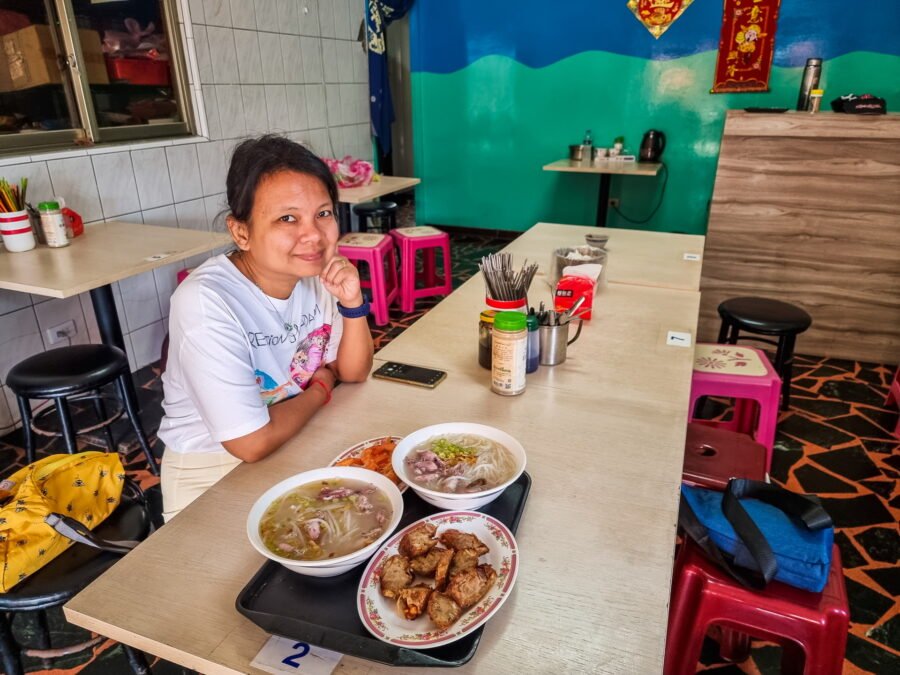
The other typical style on the island is the kind of "food court", but instead of a " hawker centers » from Singapore or those from Thailand, it is not a grouping of several restaurants with various dishes at your disposal but rather various dishes offered within the same establishment.
In short, it's a kind of buffet where you can choose what you want to eat, but not as a fixed price without limits, you actually pay for what you eat, but it's really not expensive.
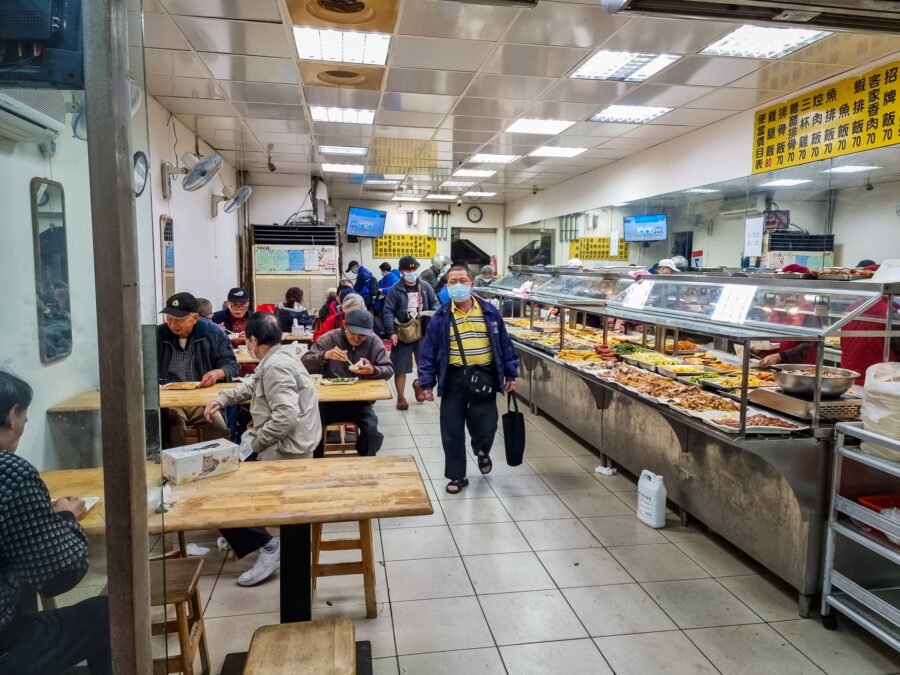
Another type of buffet, more classic because also very popular in Thailand, the "hot pot". In this concept, we have a pot where we can choose two different types of sauces, in which we can cook a wide choice of meats, fish and vegetables.
In my case, the experience was meh, because despite my orders, I had half of what I had asked for arriving at the table... Fortunately there were other dishes available in a dedicated area, without having to order.
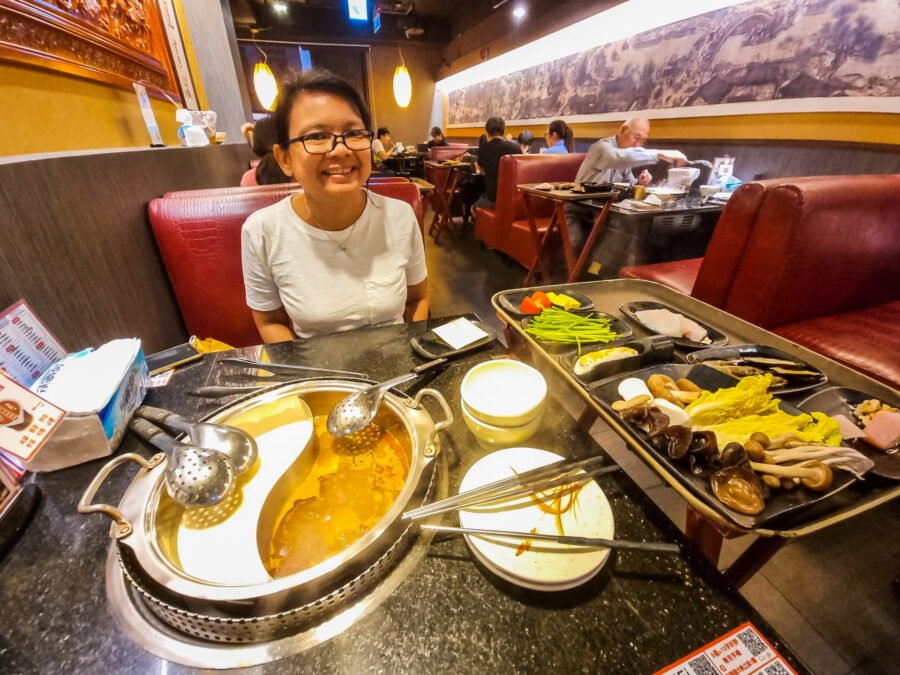
Finally, the last culinary experience that we also tried was 7-11 (pronounced in English, seven eleven), these famous convenience stores that we find in abundance in the land of smiles, are also quite common in Taiwan.
But if in Thailand it is not really set up to eat there (there is sometimes a kind of bar with stools, but not much more), it is common here to have a dedicated space with tables and chairs. However, in the neighborhood where we were the last evenings in Taipei, we were limited because of the restaurants' opening hours.
Since that evening we were hungry late, and the miss wanted to do a few errands anyway, we took the opportunity to test their concept. To accompany this light meal, I had a small beer, thinking that it is nice in principle not to have restrictions on sales hours like in Thailand, sometimes frankly restrictive (and of dubious effectiveness).
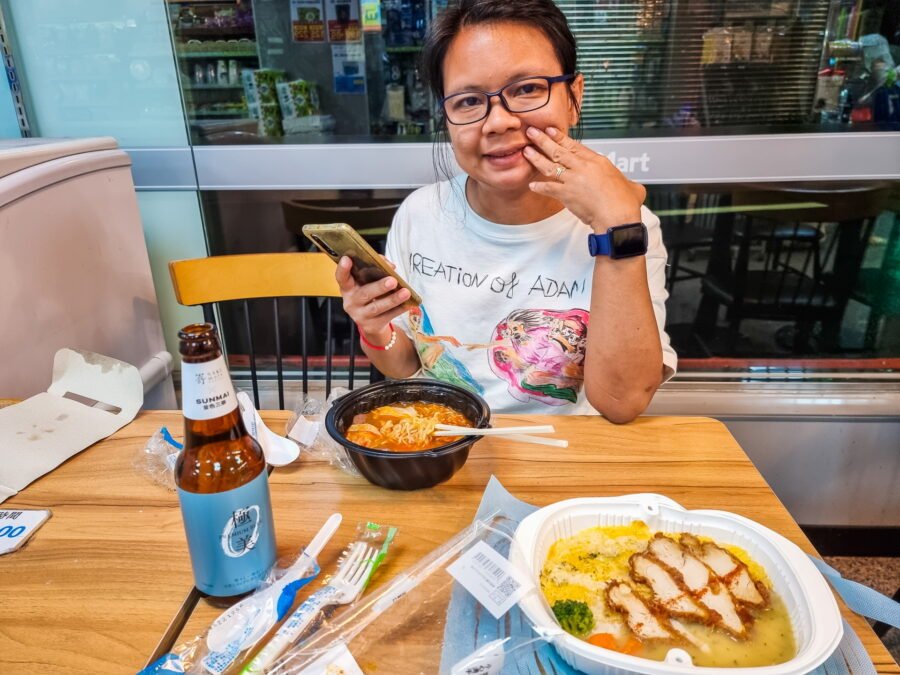
7 days in Taiwan: our itinerary
As mentioned above, you should know that it is indeed the wife who establishes our daily schedule in advance. We then look at it together, with adjustments in order to optimize and respect our respective desires.
Arriving mid-afternoon on the first day, we had 6,5 days rather than a full week. With this length, the bulk of our stay revolved around Taipei, its capital and point of arrival.
Here's how we divided up our days in Taiwan:
- Arrival in Taipei – Familiarization with our neighborhood, where the Rahoe Street night market is located + visit to Longshan Temple
- Taipei – Taipei 101 + Dihua Street
- Taipei – Huashan 1914 Creative Park + Chiang Kai-shek Memorial Hall
- New-Taipei – Tamsui district
- New-Taipei – North coast (Bitou + Jiufen)
- New-Taipei – Pingxi district (mountain around Shifen)
- Taipei – Beitou district
The advantage of this program is that we didn't waste time on transportation since we visited everything from Taipei. On the first half, we did everything using public transportation (mainly by metro, practical, and a little by bus and only two taxi rides).
To give a little more detail, we arrived at the airport around noon. We originally thought that would give us the end of the afternoon to visit a bit, but we deliberately didn't plan much. And we did well, because in the end, by the time we bought a SIM card, queued up, which was quite long, to go through immigration and made the trip from the airport to our hotel, we were only putting our suitcases in our room at 16pm!
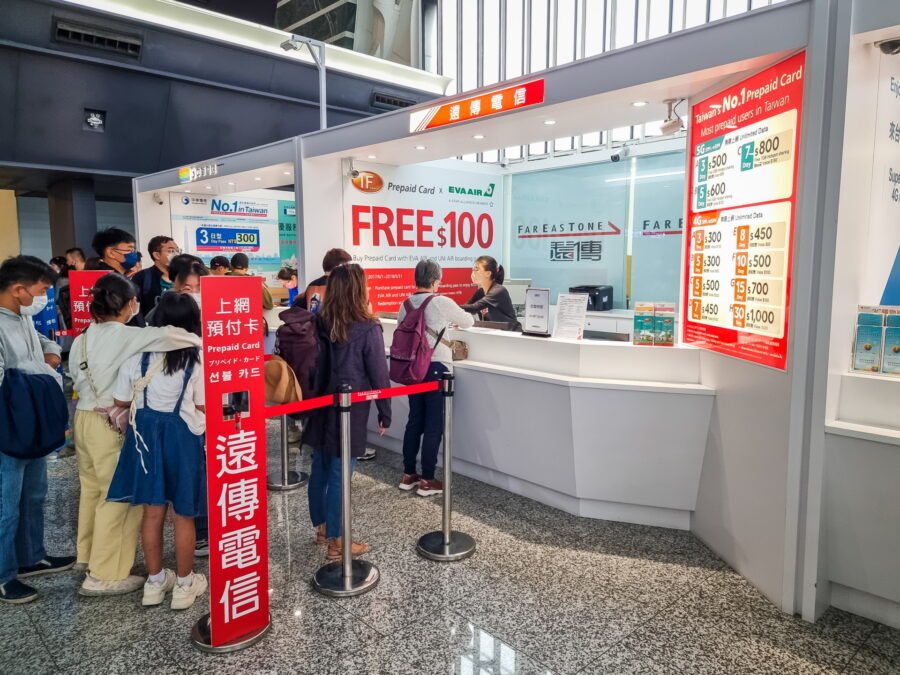
1er day: We started with a visit to a Taipei classic, the Longshan Buddhist and Taoist Temple. The advantage is that it closes late, so we had some time to get acquainted with our neighborhood, which is part of the Songshan district. Besides Rahoe Street, the street of our hotel where a night market is active between 17 p.m. and 23 p.m., there is a fairly famous temple, just at the end of the latter, the Songshan Ciyou Temple. Once the visit to Longshan is over, we go to another night market not far from there (Taipei is full of these lively streets in the evening), Huaxi Street Night Market.
2nd day: we focused our visits around the famous 508 m tall tower, Taipei 101 (because 101 floors), which was for a few years the tallest tower in the world. Later, we changed areas to go around Dihua Street, a shopping street with quite a few cafes, restaurants and shops of all kinds. Originally, we planned to end this day at the Lin An Tai Historical House. We therefore arrived in the area via the metro at Yuanshan Park. The problem is that from there, you have to walk about 1 km to get to the house, which closes at 17 p.m. ... Too late, but no big deal, because the park is nice and there was a market where we hung out. We even had time to get to the Ximending district, a sort of "Siam Square" in Taiwan. We ended the day finally next to another historic house in the city, The Red House.
3nd day: we started at Huashan 1914 Creative Park, it was Jitima's request, who generally likes to see places related to art (for those who don't know, madam teaches graphic design and drawing, see his instagram). We stayed in the area and then went to the brand new " Rongjin Gorgeous Time", a shopping street with restaurants and cafes that take up the Japanese architectural style, as it was built on the site of a former prison dating from the Japanese colonial period. In doing so, one could reach on foot the main attraction of the day, the imposing Chiang Kai-shek Memorial Hall. For the end of the day, I suggested that we go to the park not far from there, called Daan Forest Park, known in particular for its pond which is home to many birds.
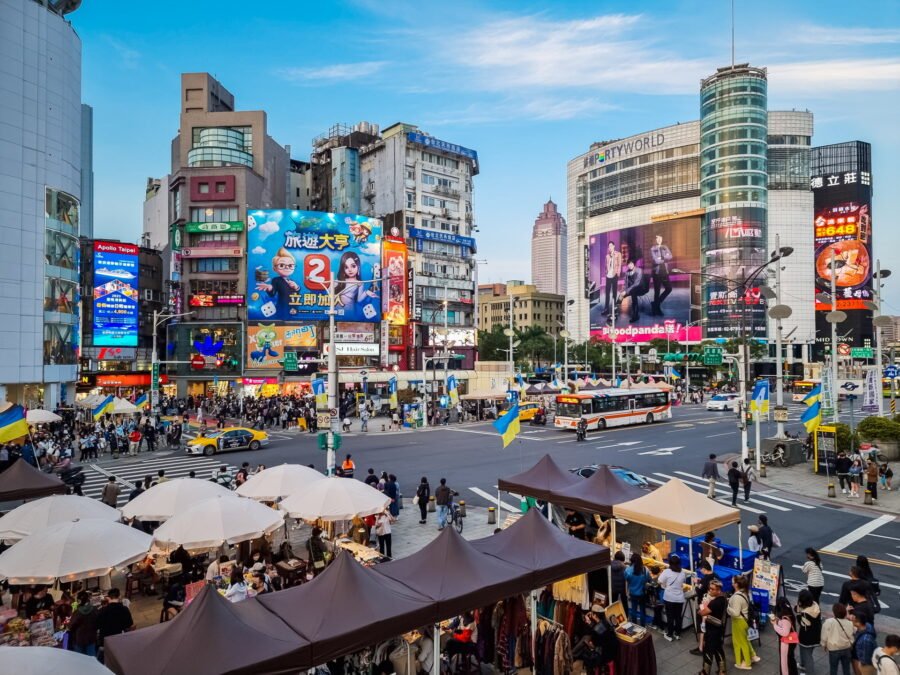
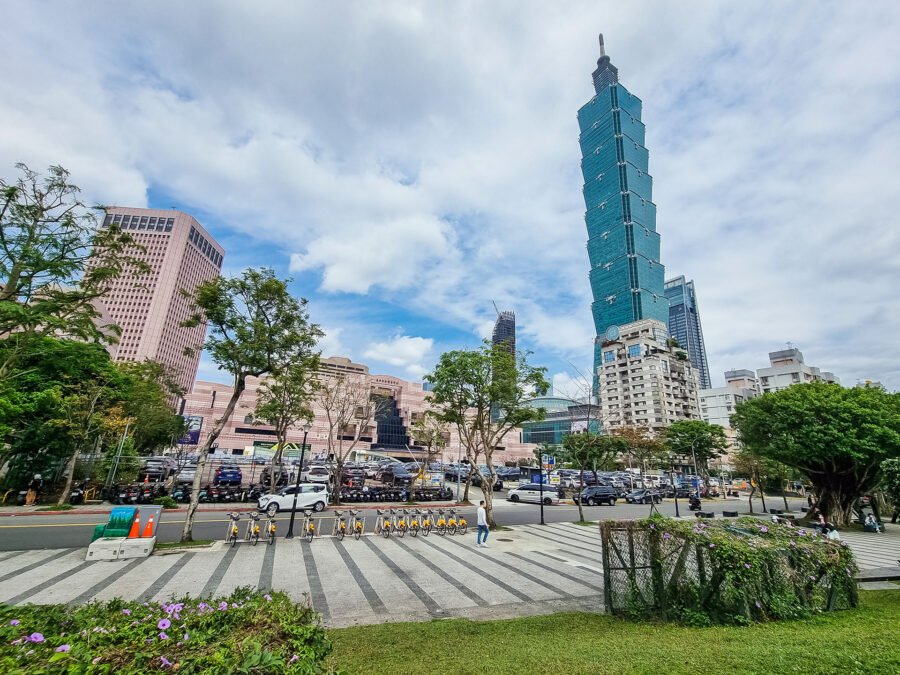
4nd day: Originally, this day was planned to visit Tamsui and the opposite bank, called Bali. If we had a good time wandering around Tamsui, a nice neighborhood located on the seaside and part of New Taipei, we left Bali behind after seeing the huge queue to take the small ferry crossing the river. At least, it left us time to visit something else, and even if the timing turned out to be right, we were able to visit this time the Lin An Tai Historical House.
5nd day: In order to see something other than the city, we decided to go and explore the coast to the north of the island. The region is still part of New Taipei, which, in addition to the city adjacent to Taipei, actually includes the entire northern tip of the island (except Taipei itself and the municipality of Keelung). This was an opportunity to see the wild coast, with the Nanzilin short trek, golden waterfall and especially the walk around the Bitou cape. To complete, we went at the end of the afternoon to Jewish, a former small mining town that saw its popularity explode thanks to a film " The City of Sadness » (The City of Pain in French).
6nd day: 2nd day out of the city, but after the coast, we went deeper into the mountains this time, still in this northeastern region, which is part of New Taipei. Our first stop was at conseridable, known for its lanterns and waterfalls. For the rest of the day, it was spent at Houtong Cat Village, a former mining town now known for having a cat population far greater than the number of inhabitants.
7nd day: For this last day, we had to visit Beitou. Located halfway between Taipei and Tamsui, it is a town nestled at the foot of the mountains, famous for its hot springs. With the time we had left, we returned to the city center while Jitima wanted to return to Bopiliao Historical Block, a small piece of historic quarter featuring traditional 18th-century architecture, as well as an educational center, not far from Longshan Temple.
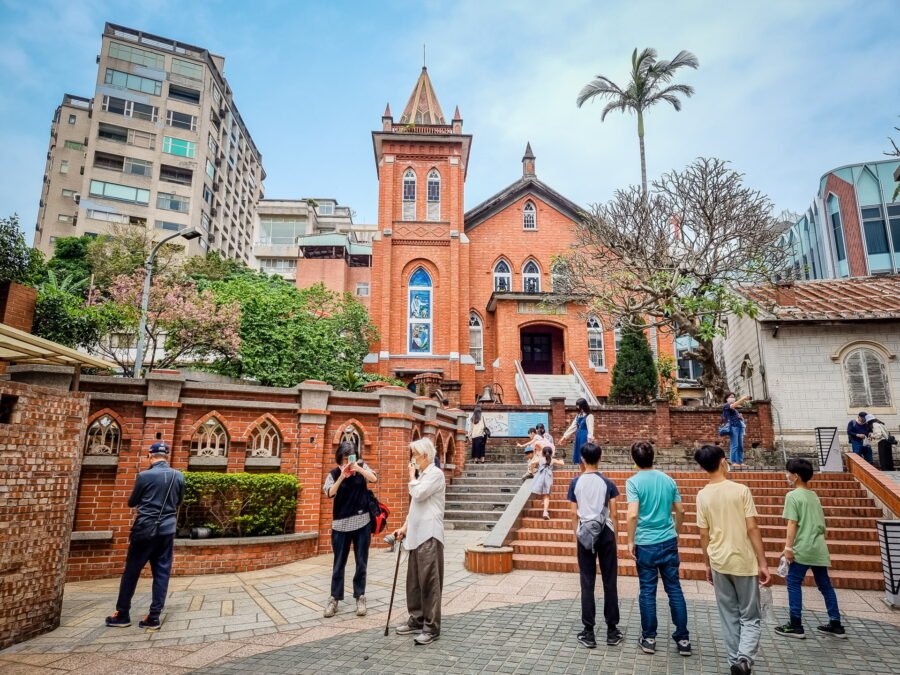
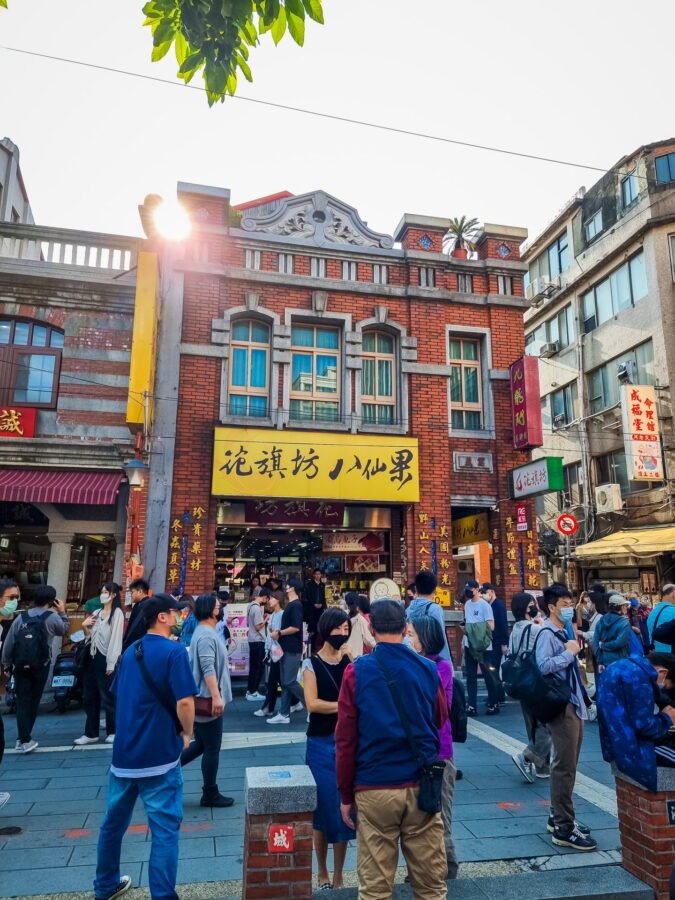
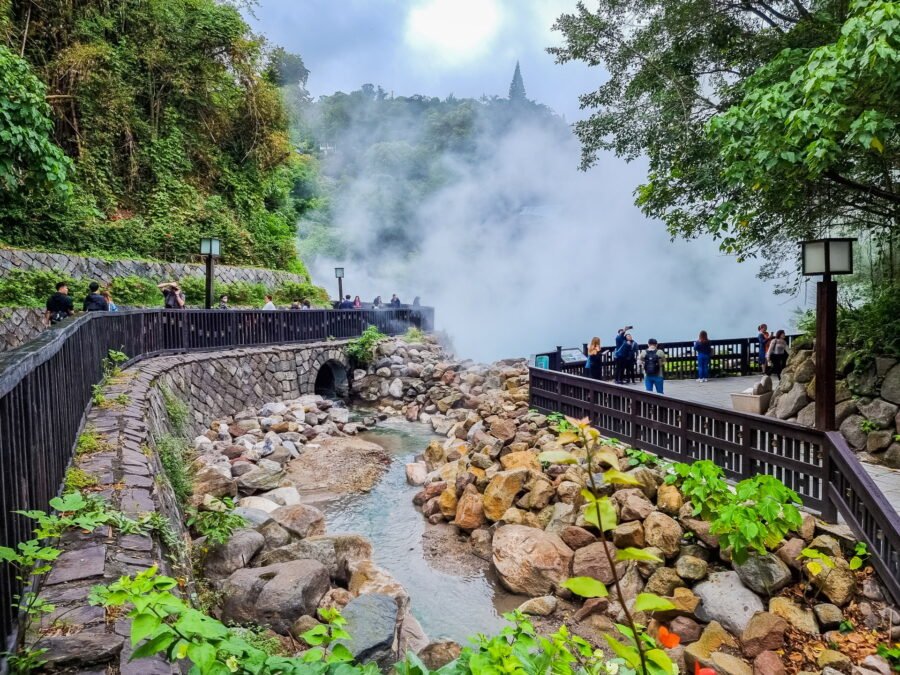
Budget for a week in Taiwan
By drawing up my famous budget diagram, I realized that ultimately, this trip to Taiwan came to similar prices to our previous trips to South Korea and Japan respectively. At first glance, we can't really say that it's such a cheap country, but when we break down the budget, this impression is a bit misleading.
Already the way of traveling will obviously influence this budget, but it is also necessary to take into account the period. In our case, and hence the importance of looking at the dates before (see here public holidays in Taiwan), we were falling into a fairly popular holiday period, with hotels more expensive than normal (hence the need to move away from the city centre in the first few days). In early April, there is indeed the combination of Children's Day and the Qing Ming festival. It would be like coming during the Songkran in Thailand.

Budget on site: 32 ฿ (028 €) or 865 ฿ (4 €) / day for 2, in the same vein as I said in Japan budget and that of the South KoreaThe real difference is twofold.
Already, concretely, food was 10% cheaper for us than in South Korea, however, if you do the math, it comes to €25 per day per person, so we didn't deprive ourselves. The fact is that when traveling, we tend to snack often, if only to try lots of different things. Not to mention coffee breaks and treats here and there, it can quickly add up.
The transport budget can also be reduced, because in our case, I am particularly attached to the independent side, so I insisted on renting a car for our exploration of the north of the island. These 3 days of rental count for 5 ฿, or two thirds of the transport budget. Added to this are gasoline and parking at night because the hotel where we were did not have one…
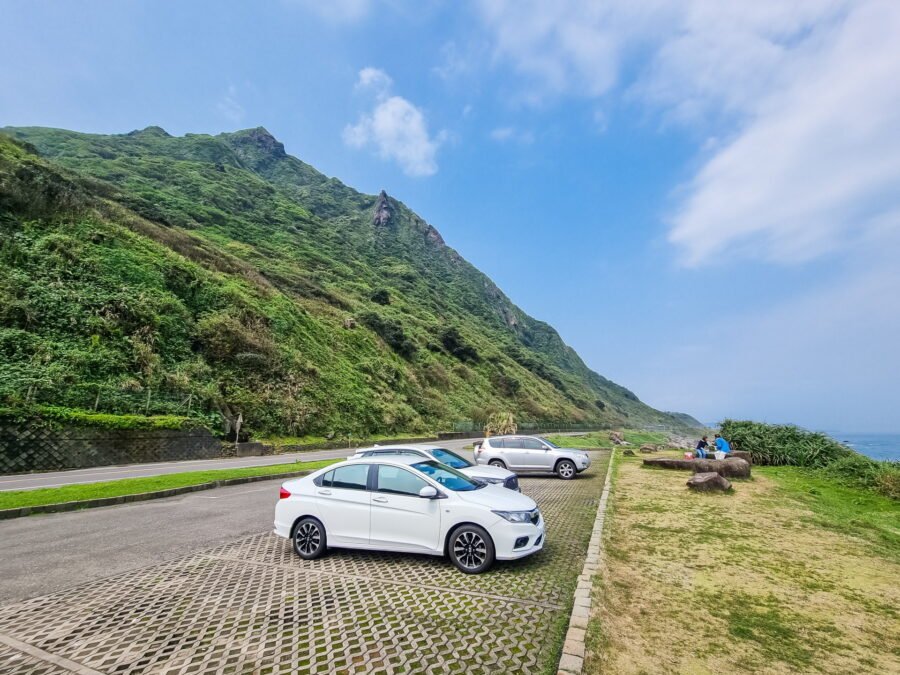
We initially considered doing it by train, which is possible given the rail network in the region, but it frustrates me because of the journey from point A to point B, inherent in the stations, preventing any intermediate stops and, above all, freedom in terms of timetables.
Regarding accommodation, we paid 14 ฿ for 780 nights, paid in advance since there is no need to bother looking on site for this kind of little trip. That makes a budget of 7 ฿.
Total Budget: 46฿ (808€) or approximately 1€ per day per person.
Add to that our plane tickets, which we had at a very reasonable price thanks to Air Asia. The flight Bangkok–Taipei, cost us 18 ฿ for 108 (or €2 per person) round trip, the same price we paid to go to Seoul, even though it is located 244 km further.
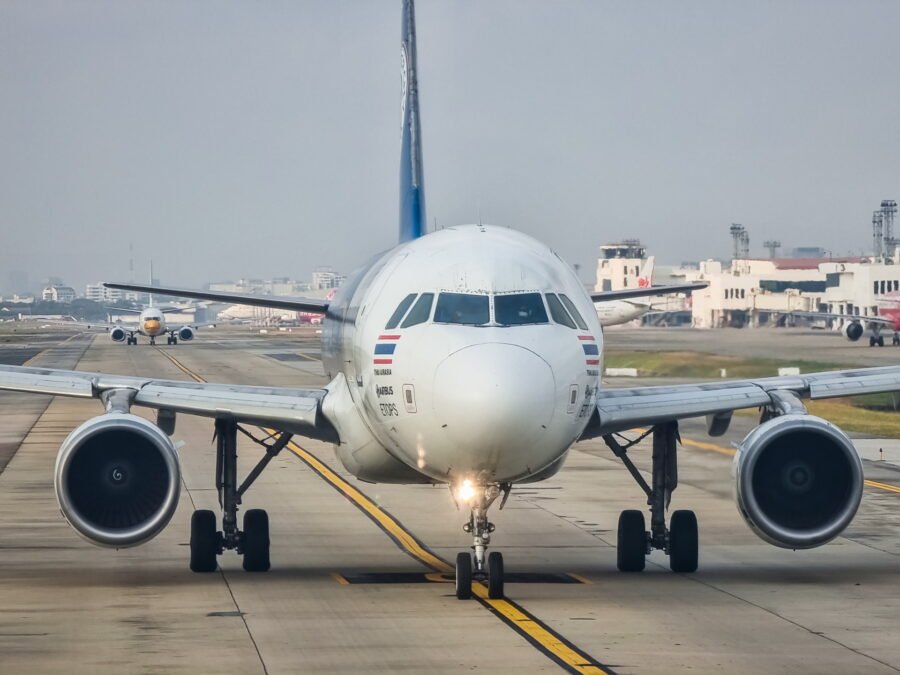
In the previous article, I made the following remark:
"after these 2 consecutive trips [Japan and Korea therefore] with fairly substantial budgets (Mainly for we because we don't have the same salaries proportional to Europe!), Yippee think we should calm down a little next time"
Well, it was a failure… But like I said, it was done on a whim, it's never good for planning a budget properly.
It should also be noted that once again, the souvenir budget is not negligible, with 8 ฿ (883 €), which still represents 240%, an expense which is not essential in itself and can easily be reduced.
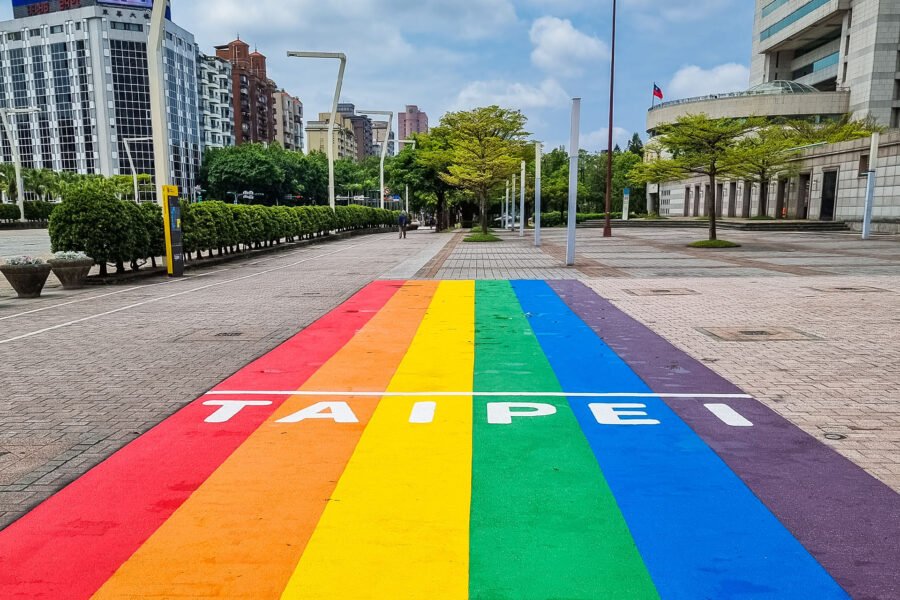
In the food + drinks budget, there was practically a stop every day for an ice cream, a waffle or other snack, with also our coffees and sometimes an alcoholic drink in the evening, which already made a daily "extra cost" of around €15, around 1/3 of the total food budget, which can be avoided if you have a tighter budget.
The biggest meal turned out to be the famous Hot Pot that Jitima was keen on since it came to €54 (€27 per person). The snacks were, besides our desire to try, linked to the fact that we never ate at a set time, sometimes a brunch, sometimes a half-meal due to lack of time, which meant that we often found ourselves hungry...
In terms of transportation, we had a taxi that cost us more than expected because of a misunderstanding about the restaurant we wanted to go to, which added about 120 NT$ (3 €) to our fare. We could have also saved on the ferry to Bali, which we had just paid for, before realizing how long the queue was and giving up. After that, I'm really nitpicking, because the ferry cost us 136 NT$, which is not even 4 €...
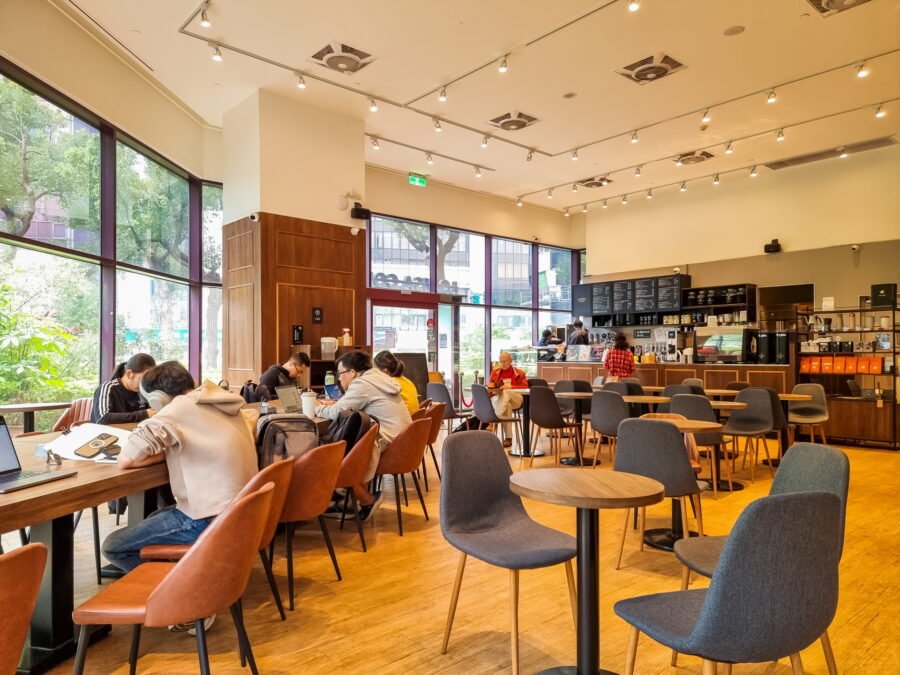
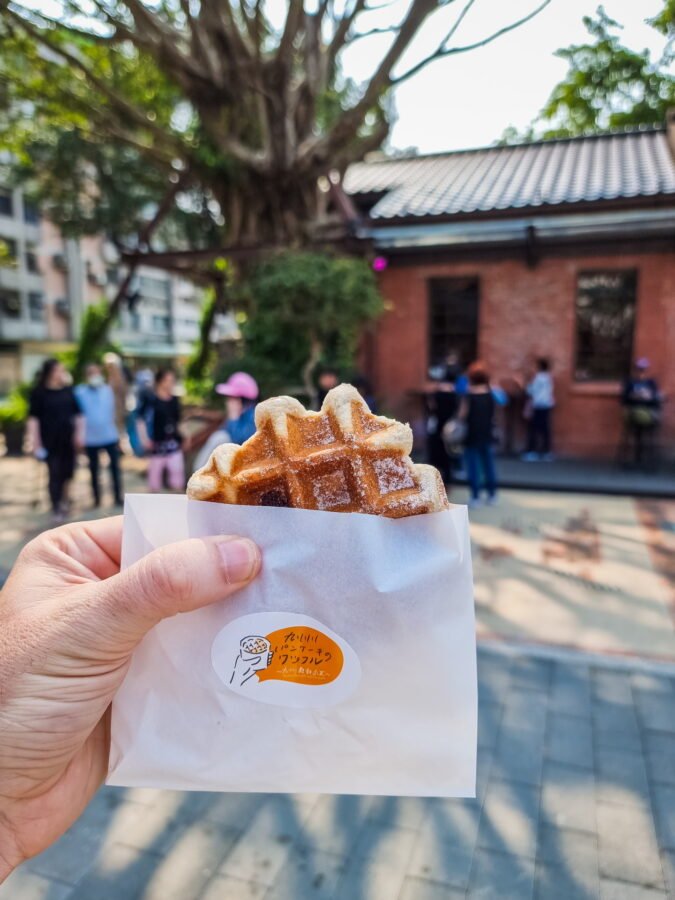
Some pointers:
- A small 33cl bottle of water costs on average NT$18 (€0,5)
- A meal costs an average of NT$230 per person (€6)
- Subway: an average trip costs NT$22 (€0,6)
- Average price for visits: free
I would like to point out that in our case, we only made one paying visit, which was the Fort San Domingo in Tamsui, at NT$80 per person (barely €2). Everything else, temples, natural sites, museums, were free. This is all the more pleasant because in Thailand, I am sometimes exasperated at always having to pay, especially for a foreigner.
Explore more!
To learn more about each of the stages of this Taiwan trip, I've written more detailed articles. Here's something to continue reading if you're interested in a particular area:
- What to do in Taipei in 3 days? The essentials for a first visit
- Explore the North Coast: Road Trip and Alleys of Jiufen
- Shifen and Houtong: A day in the mountains of New Taipei
Where to stay in Taipei
As mentioned above, we tried two different places because the prices during our first few days were significantly higher, making it impossible to stay in the city center. So we looked on Airbnb and found a room.
However, in the end, while searching for the place, we discovered by chance that it's actually a somewhat hidden extension of a hotel located a few floors higher in the same building, the Step INN (森浩文旅), which also has triple and quadruple rooms. Agoda et Booking .
For the end of the stay, we wanted to focus around Taipei Main Station, the central station where several metro lines and the train to the airport pass.
YI SU HOTEL
Budget: from 60€
Located 500 m from the train station to get to the airport, 1 km from Taipei Main Station, 500 m from Dihua Street and 350 m from a night market (Ningxia), it's a pretty good location. The hotel is quite simple, the reception is upstairs, quite small, as are the rooms, but it's modern, clean and in a quiet area at night.
Getting around Taiwan
At first glance, Taipei's metro network may seem small, with only 5 lines running through the city. However, their layout means that there is virtually no need to take other transportation to see the city's essentials.
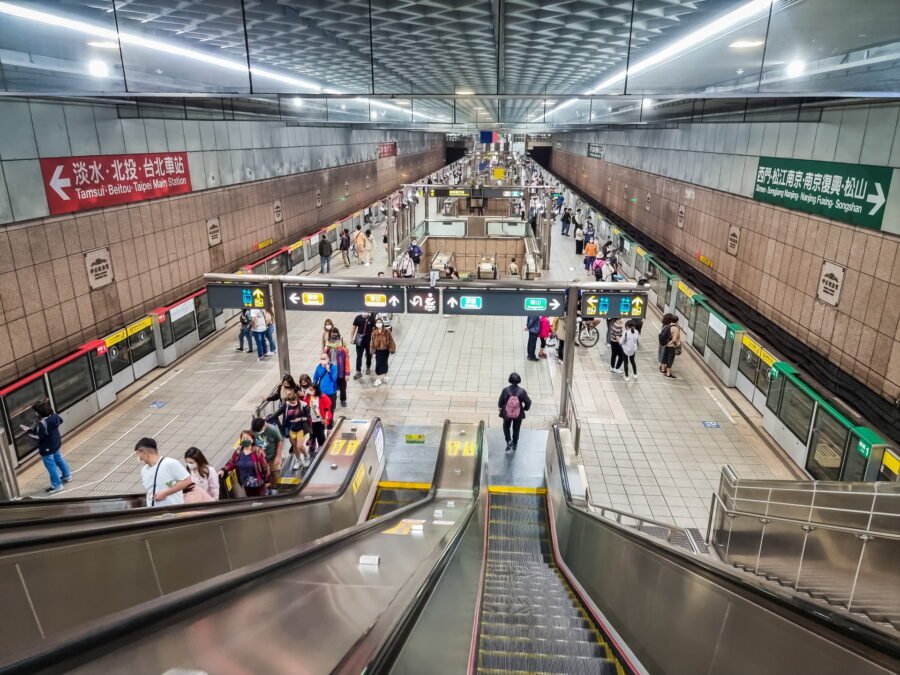
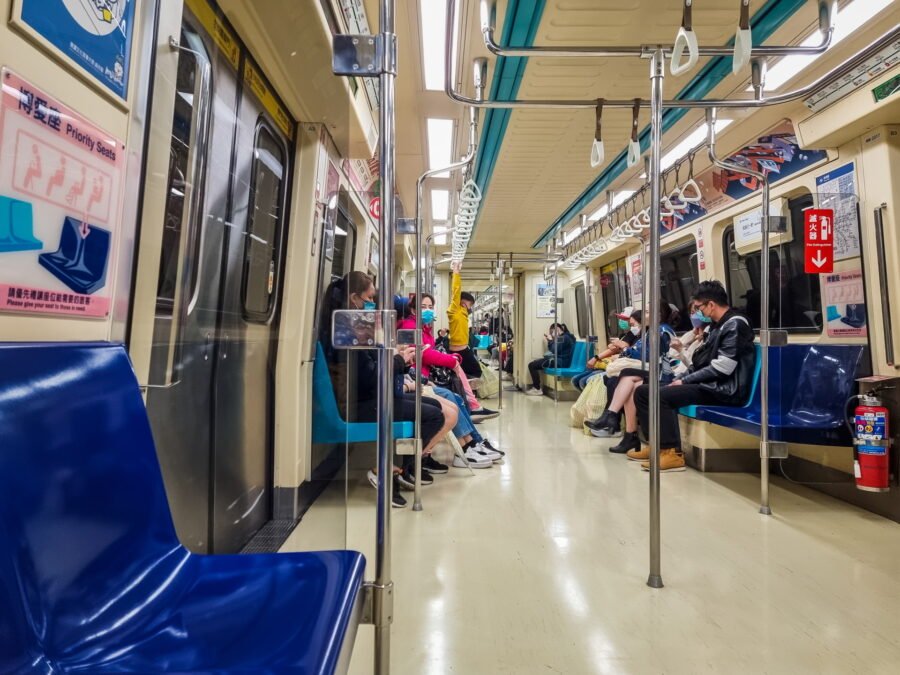
Its main drawback is a lack of north-south connection on the eastern part (where we were staying at the beginning), where in this case, it will be quicker to take a direct bus or taxi rather than making the detour by metro.
From the start, we had taken a Easy Card rechargeable card, easy to recharge at the terminals found at all stations. Practical, it avoids looking for change and you can pay for both the metro and the buses.
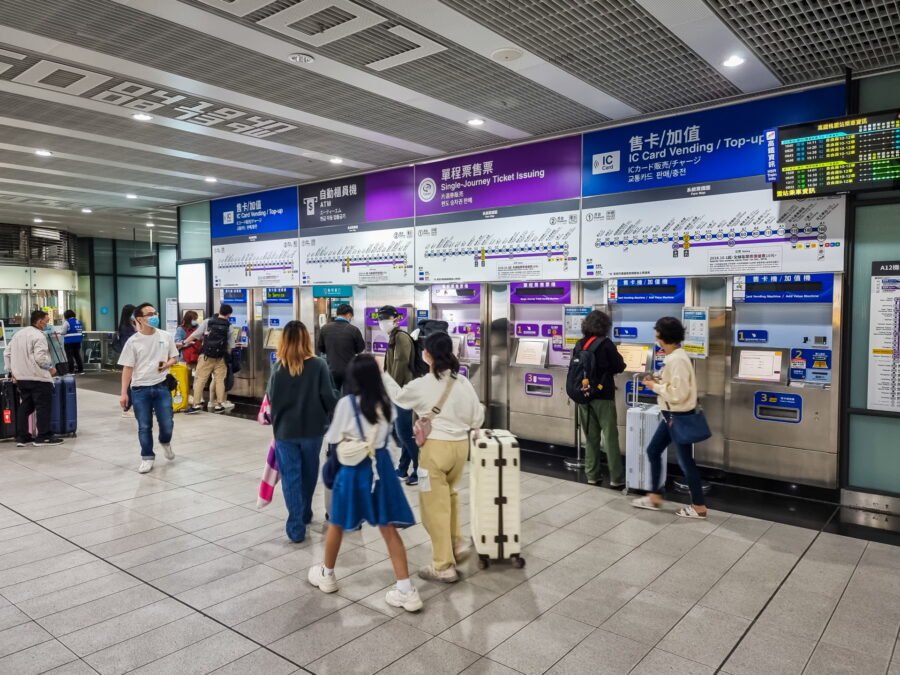
Fares are based on distance traveled, roughly, expect to pay an average of NT$30 (€0,9) per trip. It's generally easy to navigate. There are sometimes long walks between stations if you change lines, but not much to complain about, it's generally well done.
All the information about the metro on this official website (in English): https://english.metro.taipei/default.aspx
I'm putting a map of the metro network below but only to get an idea, it's not completely complete and doesn't use the official system of naming lines (which are letters, relative to their color, and not numbers). To have the update Right here!.
The advantage of this version is that it is clearer, the one in the link has all the stations in English AND Chinese so it is a bit more messy to read.
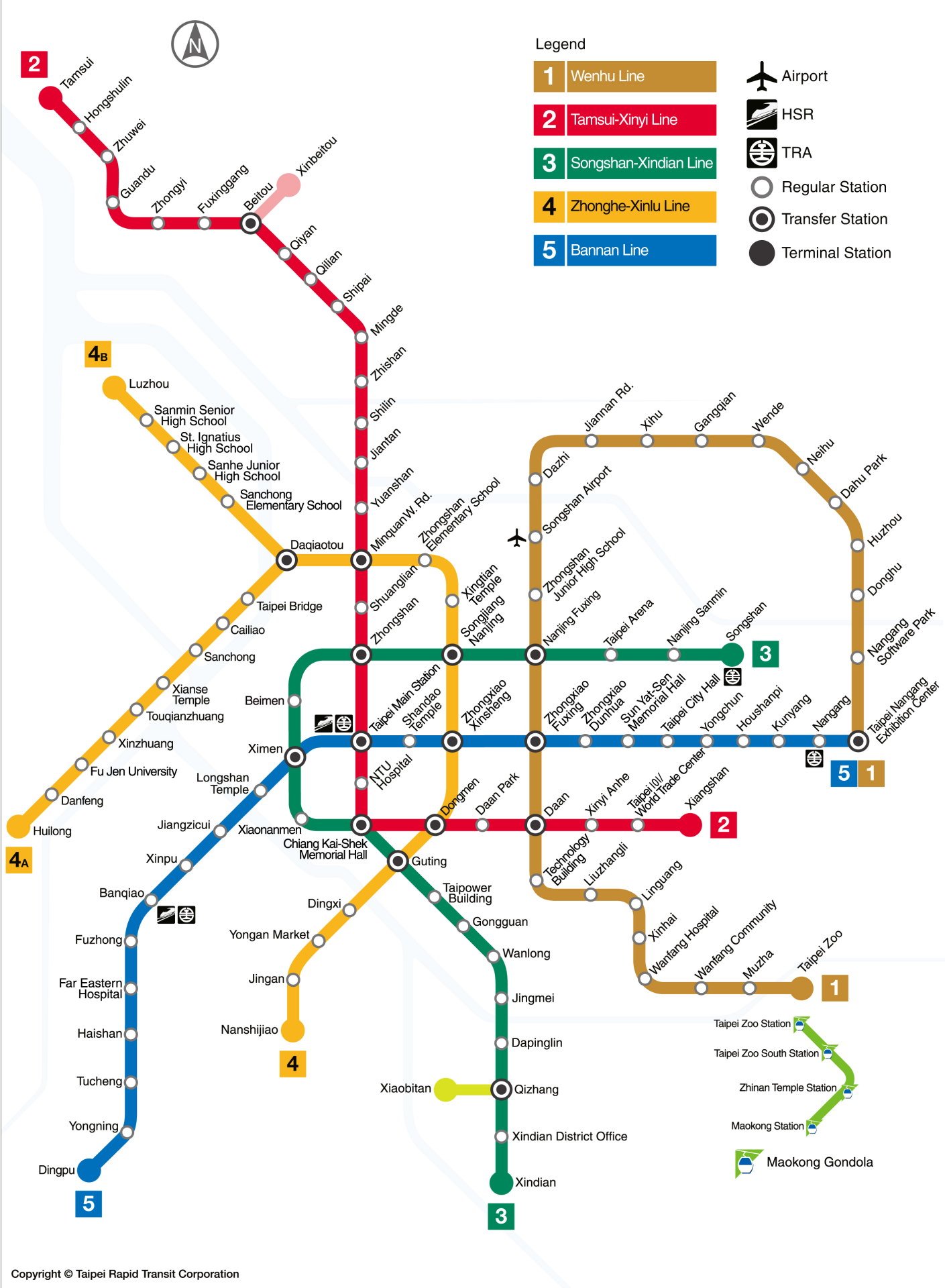
Apart from the metro, there is also a whole network of buses, which we never had to take, because on the few necessary cross-country journeys, we took a direct taxi in this case, particularly because the bus timetables were limited.
The pick-up is NT$80 (€2,3) and then it's NT$25 (€0,7) per kilometer. A 3 km trip therefore costs NT$155 (€4,5), quite reasonable for a big city. In case of traffic jams, the waiting time is charged on the basis of NT$300 per hour (€9).
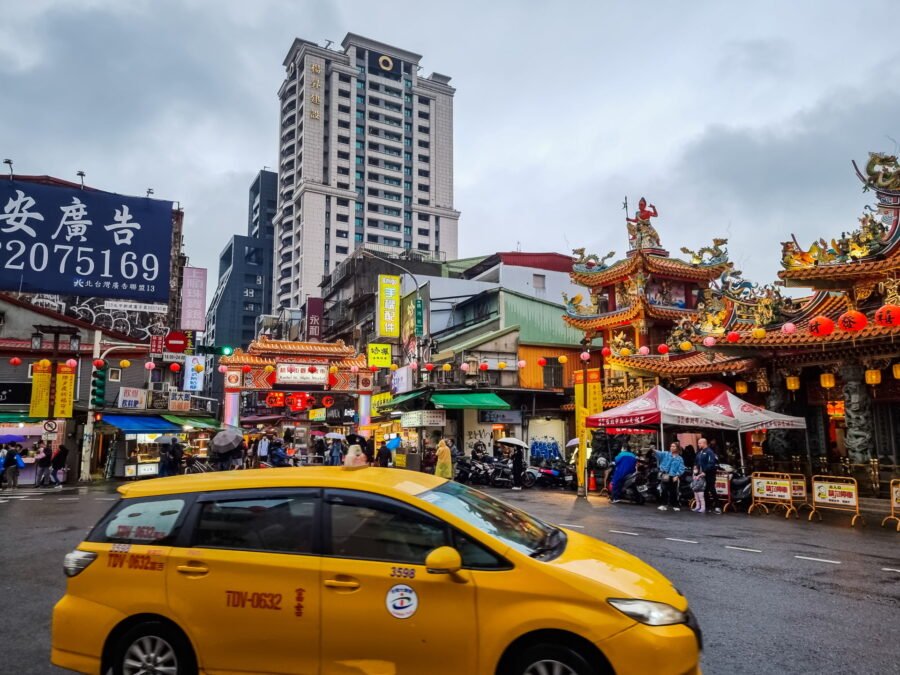
If the weather is nice, you can also rent bicycles by the hour, which are found everywhere. These yellow bikes, called "Youbikes", are available for NT$35 (€1) per hour. For our visits, we didn't need them much, as we preferred to simply walk between two areas if it wasn't too far away.
- Information for using Youbike (English)
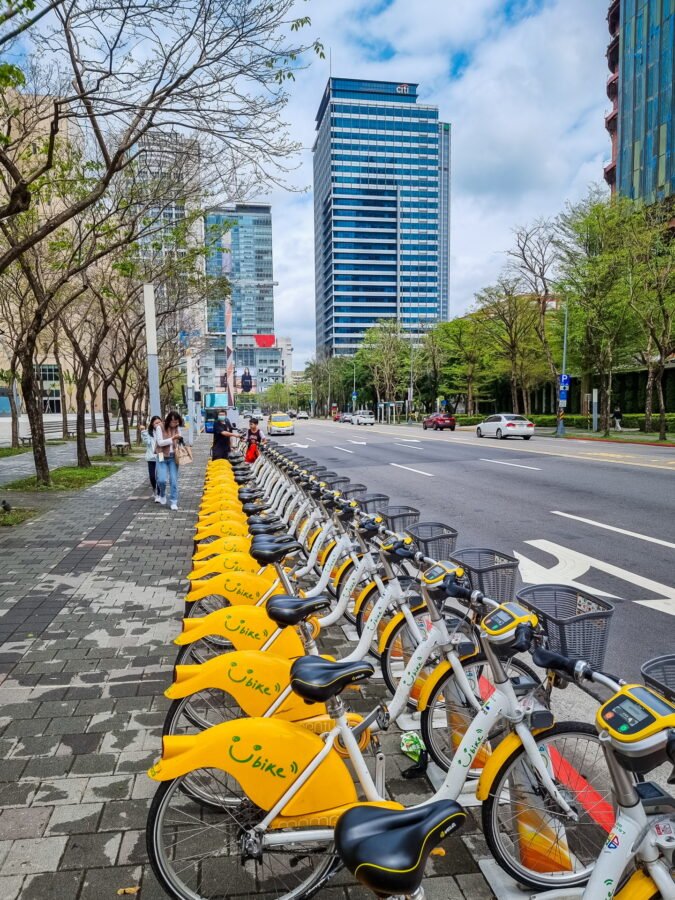
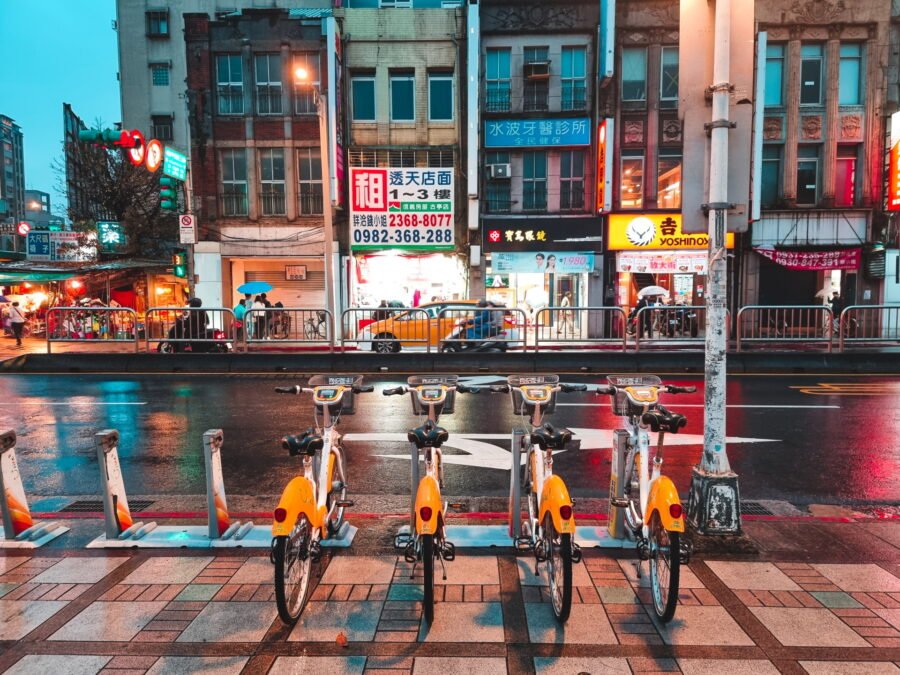
For trips outside the city, as mentioned above, we chose the easy option of renting a car, however, there are a fairly substantial railway network. It is therefore possible to visit even small mountain villages by this means of transport.
To book your train, you have the official website (in English), which also offers 2 to 5 day passes in addition to the classic one-off journeys.
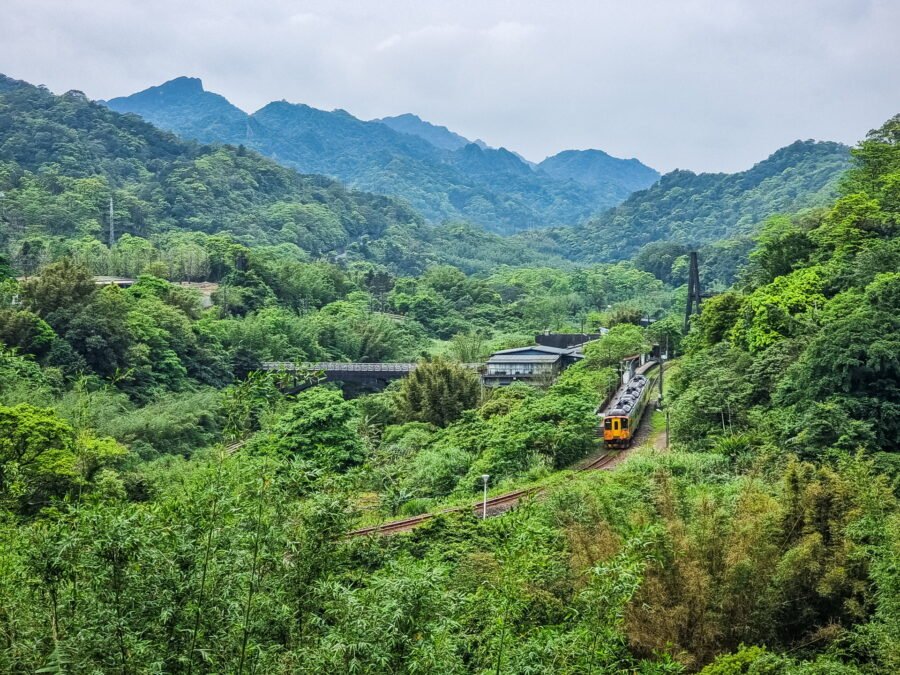
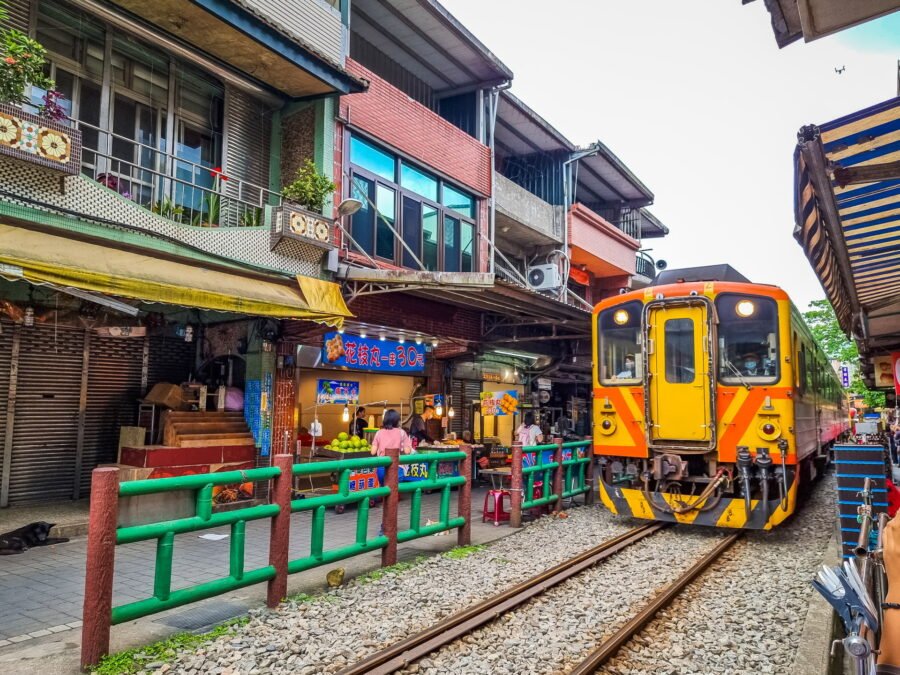
Taiwan in pictures
A small photo gallery to give an overview of this trip
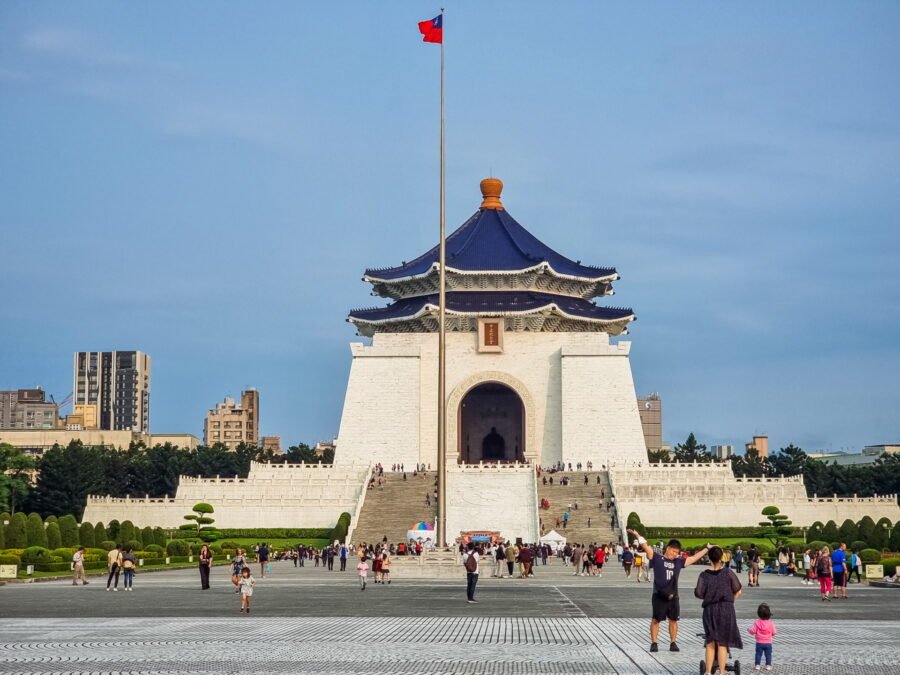
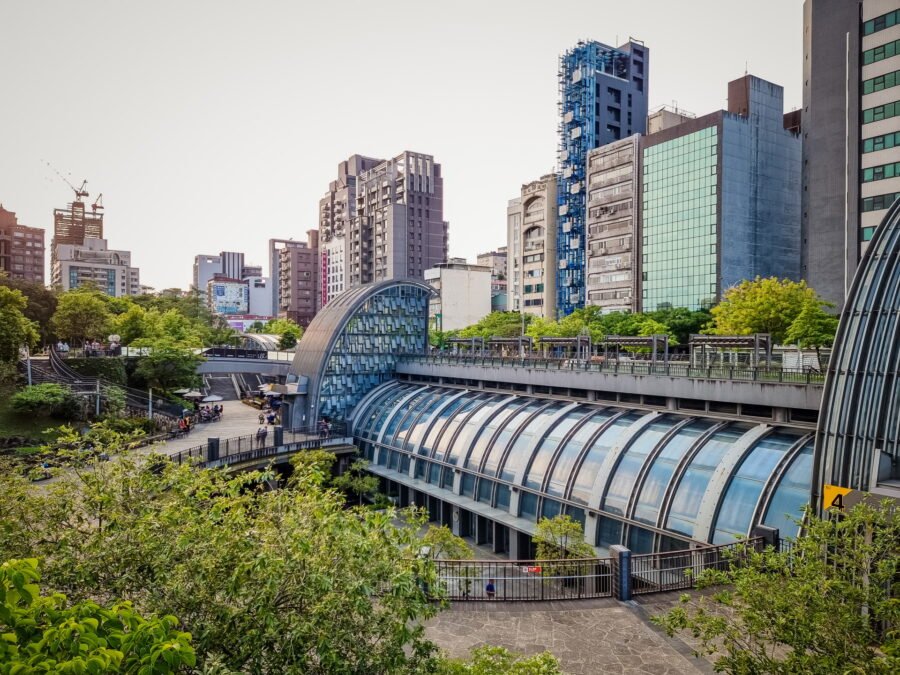
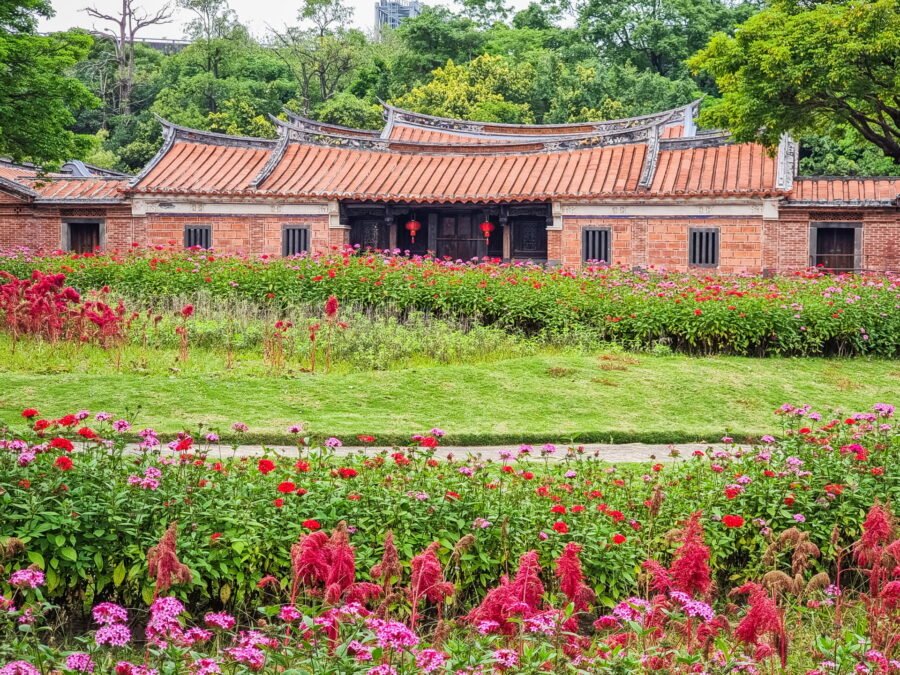
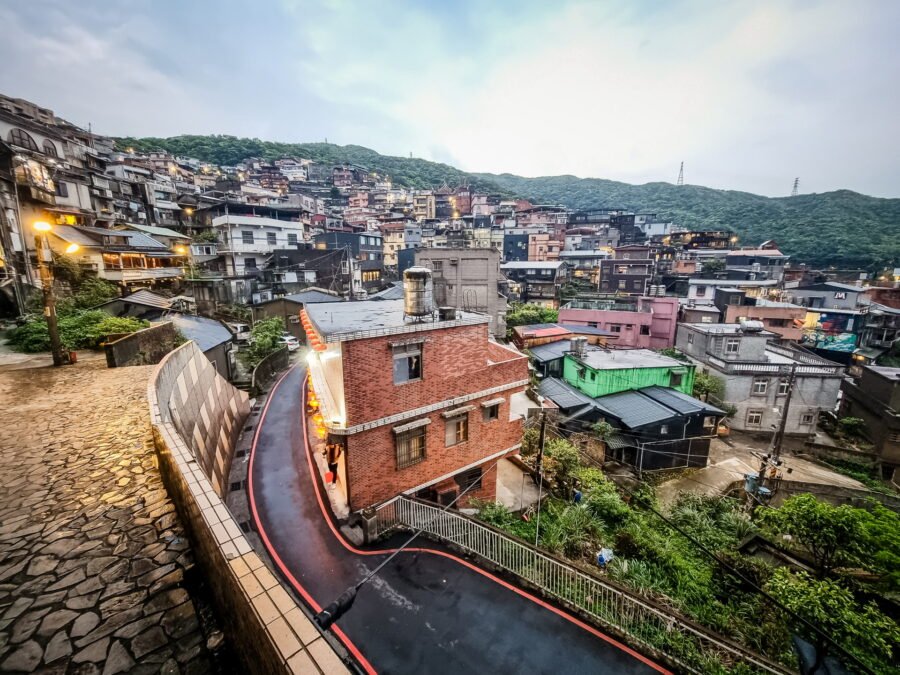
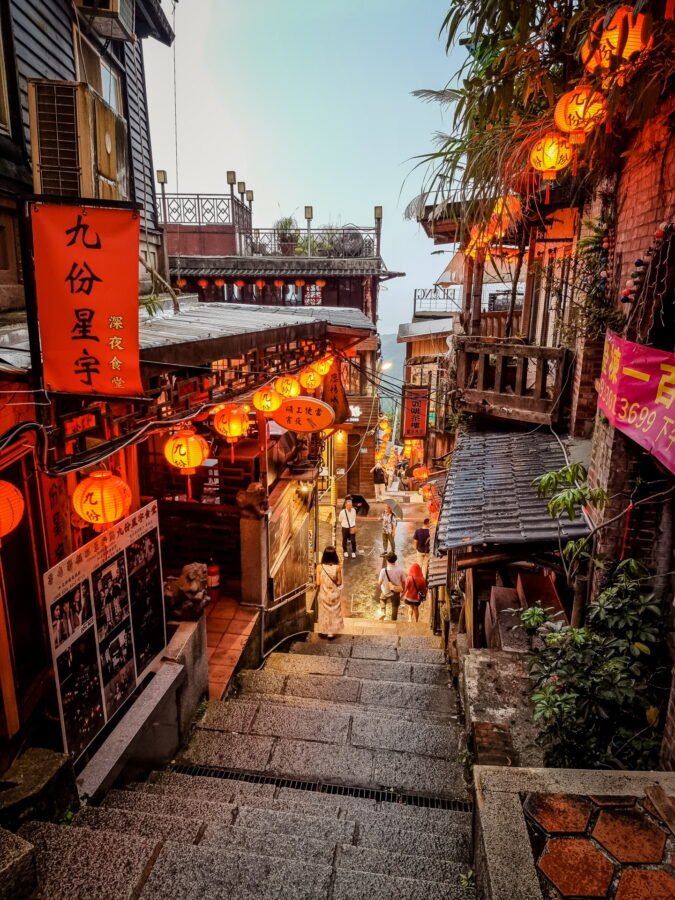
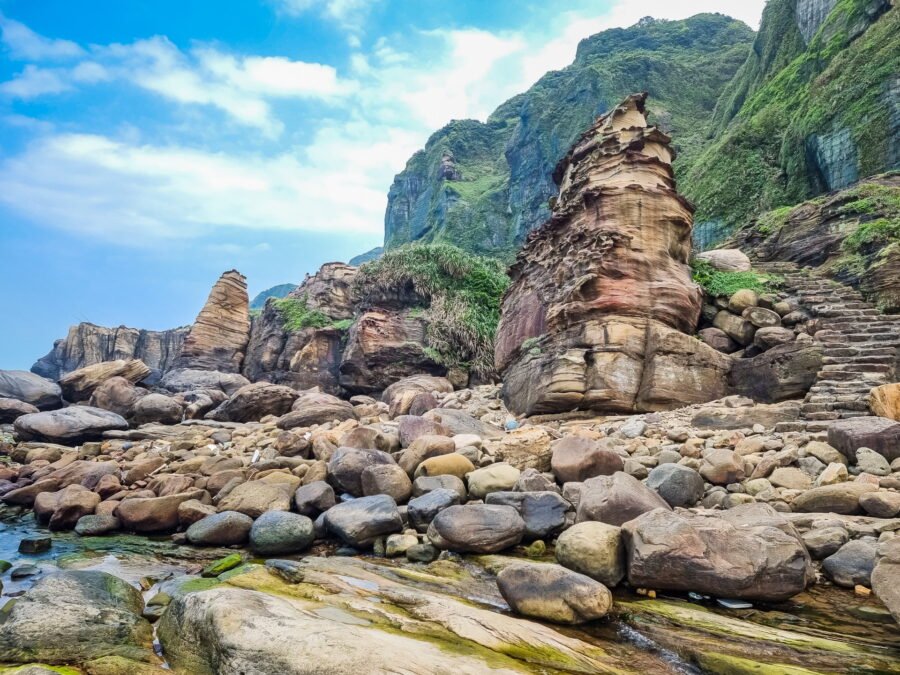
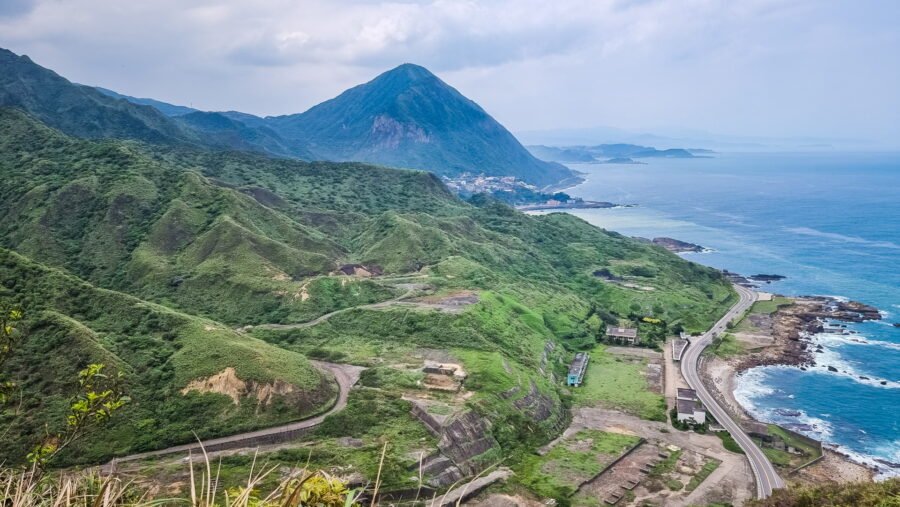
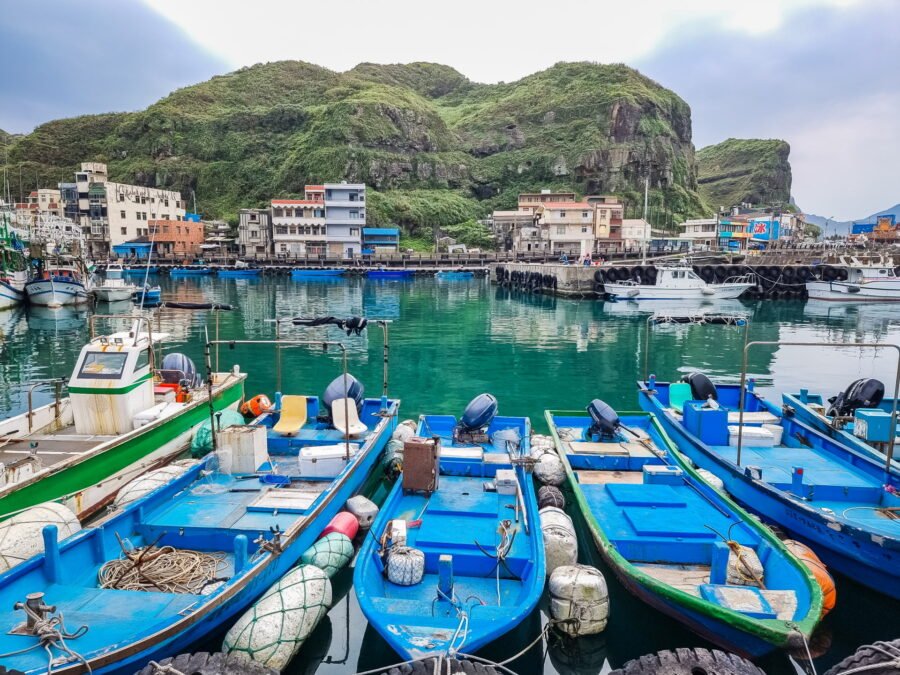
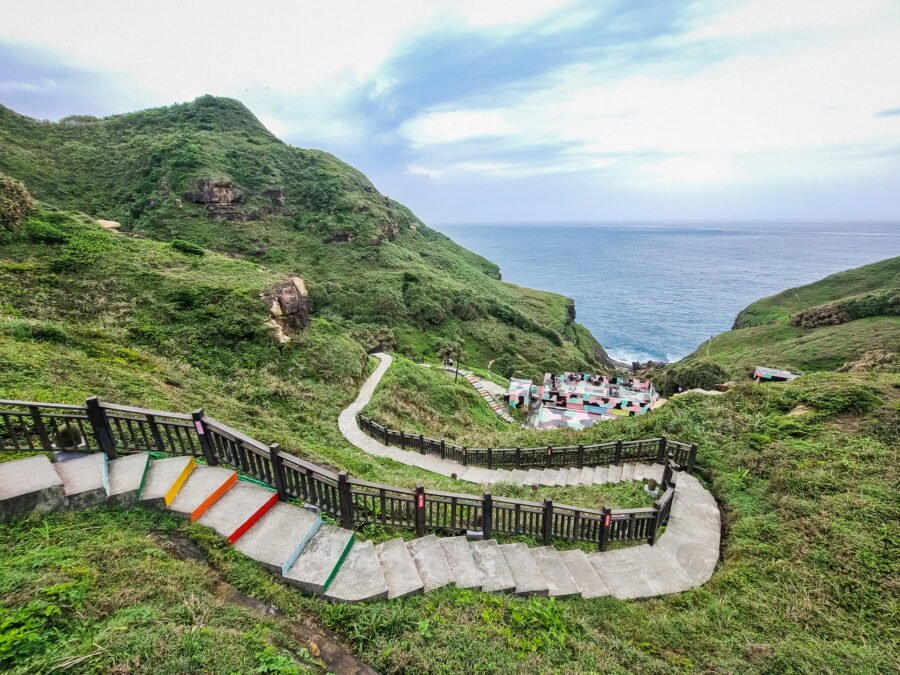
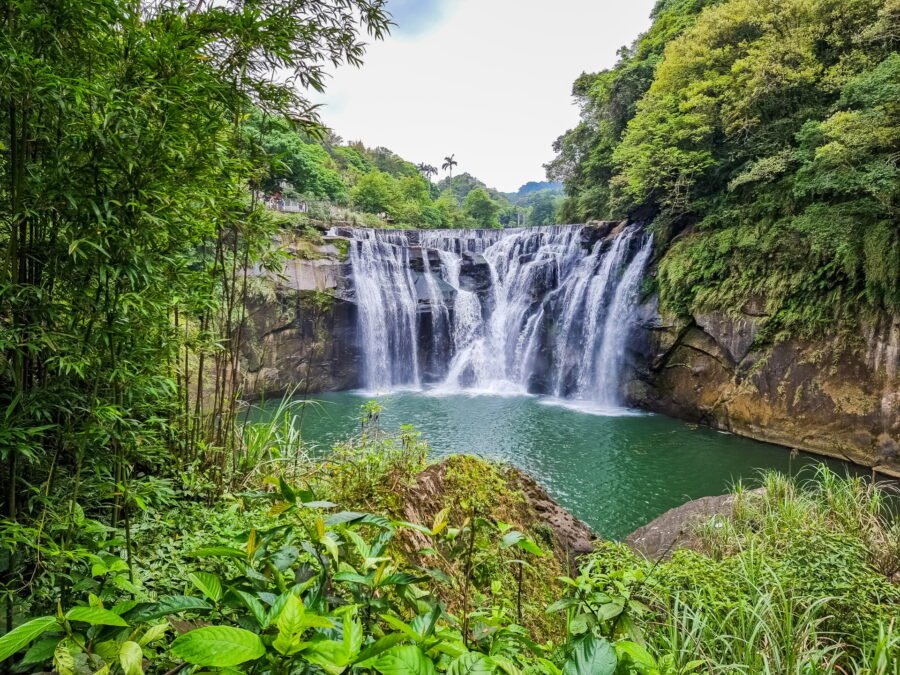
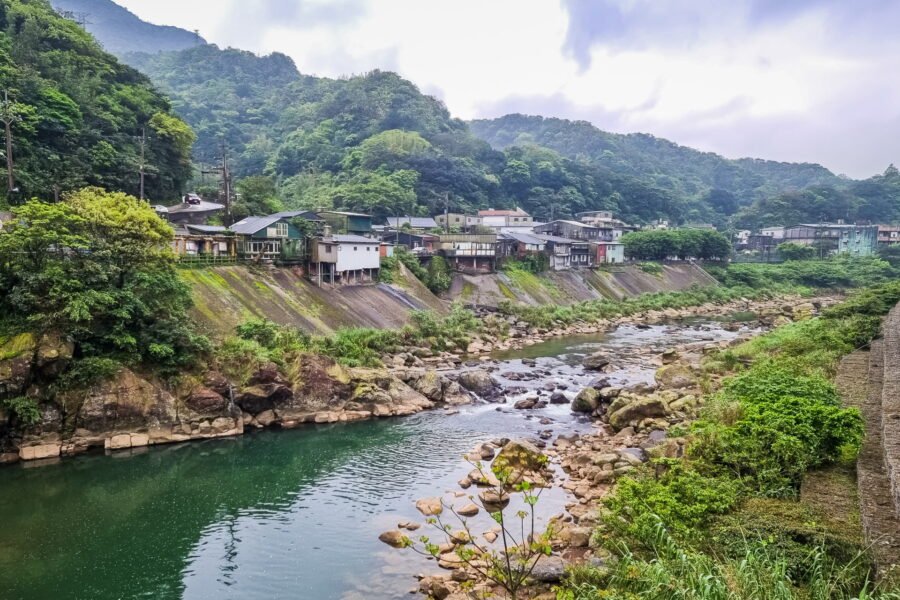
So, Taiwan, does it inspire you?


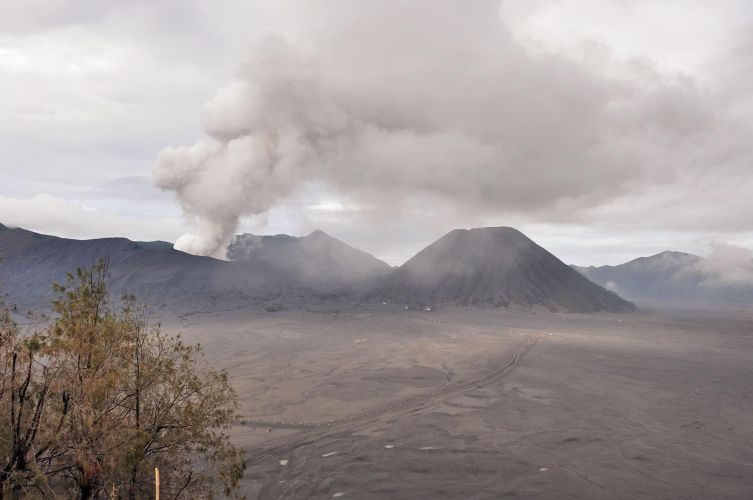

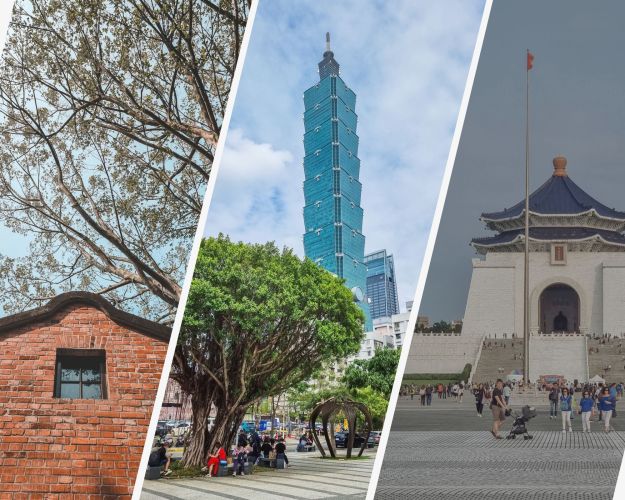
2 Comments
Hello Bruno,
Thank you for this blog, which goes to the essentials and allows us to take our bearings for a first trip.
We are going to Taiwan for a week at the beginning of September with an average budget and we are going there mainly to visit Taipei and a "food" street food road trip, my partner being of Asian origin, and unlike you, I love Asian cuisine, especially street food.
What monuments can we visit knowing that we took 3 different hotels, in Zhongshan to start 2 days, Shilin 2 days and we finish in Ximending, my wife appreciating her comfort 🙂
Hello,
I admit that your little "dig" made me tick... You say "unlike you, I love Asian cuisine", but I want to remind you and reread my article, I only mention CHINESE cuisine, don't make me say what I didn't say 🙂 Asia is vast, we don't eat the same in Taiwan as in Japan or even, as a reminder, in Thailand where I live. I just prefer the aromas and flavors of Thai dishes to those of Chinese (and even then it would depend on the provinces!)
Otherwise, to answer you, in the Zhongshan district, you have the Songshan Cultural and Creative Park, and not far away, the Sun Yat-sen Memorial Hall, it is also not excessively far from the Taipei 101 tower and the 44 South Military Village.
For Shilin, you'll be close to Beitou, known for its hot springs. And a little further away, you have Tamsui, with some attractions like the old San Domingo Fort. On the Ximending side, it's close to Lungshan Temple and the famous Chiang Kai-shek Memorial Hall. I invite you to read the dedicated articles (the one you just read is only a general "assessment"): https://thailande-et-asie.com/blog/voyage-a-taiwan/taipei